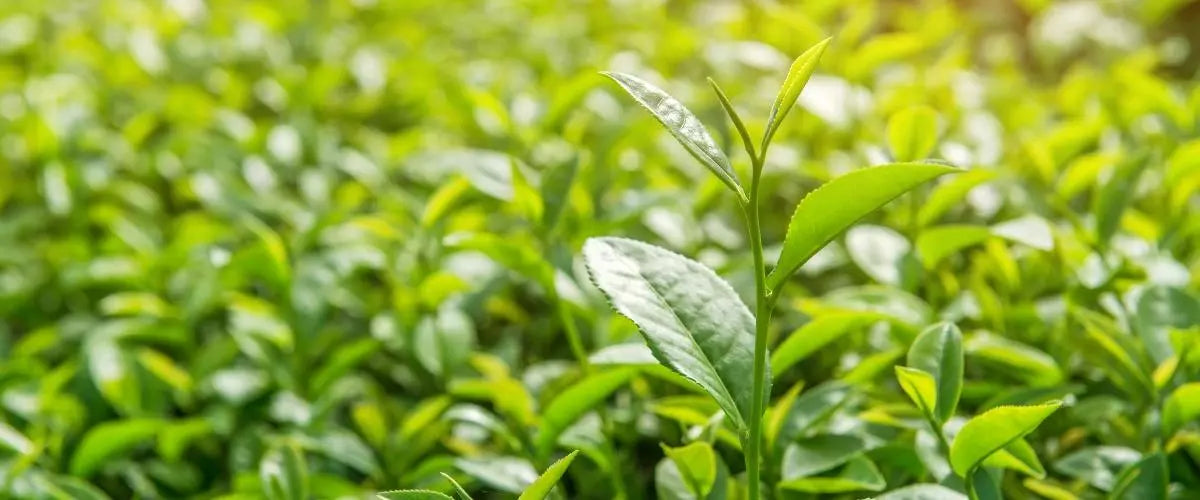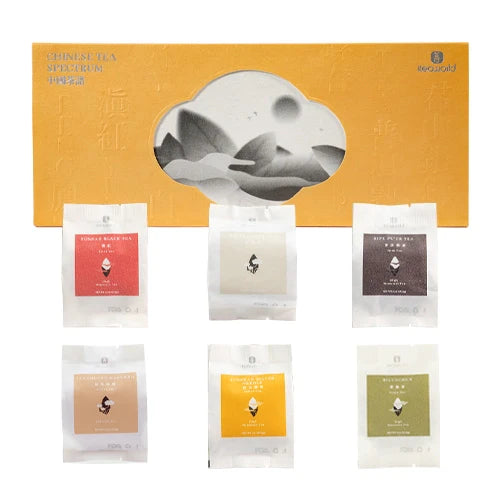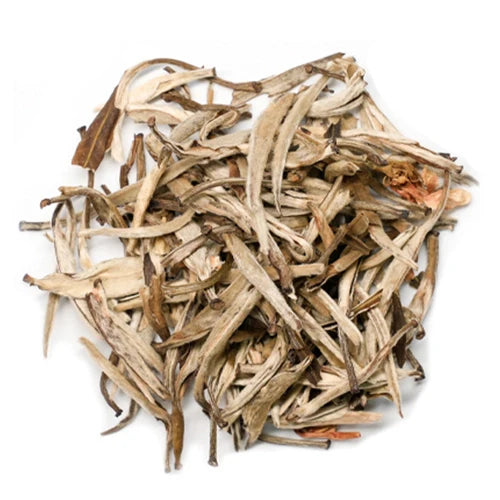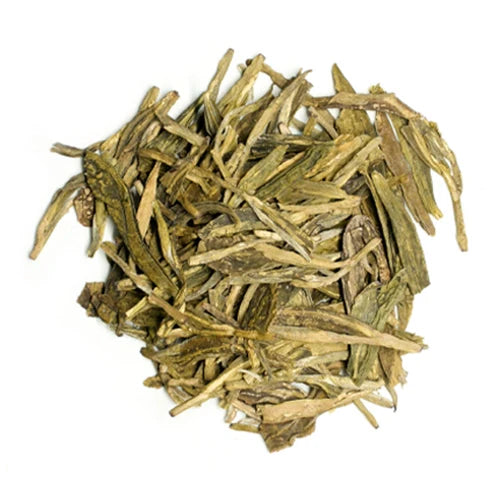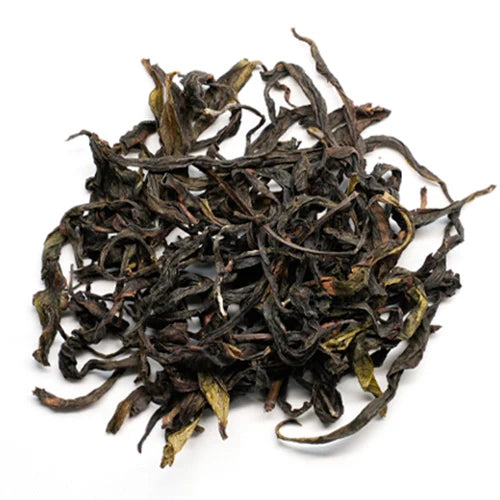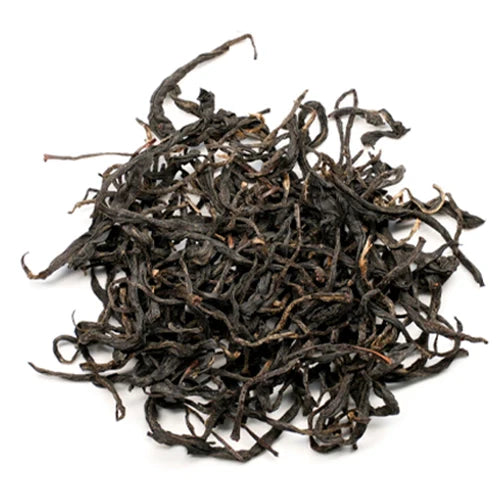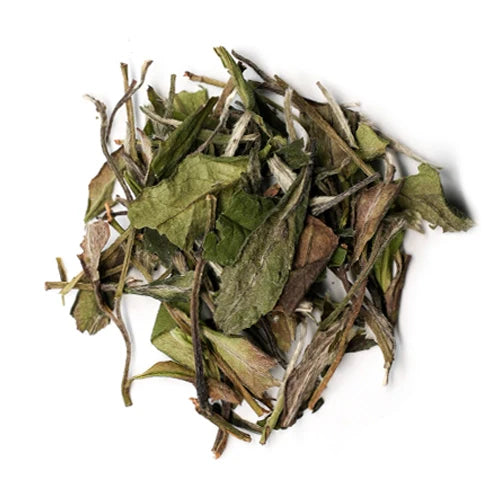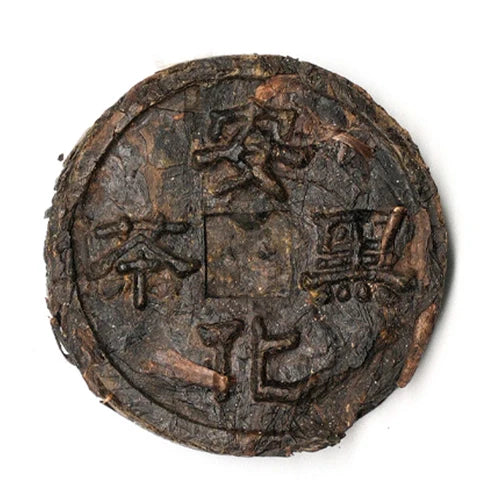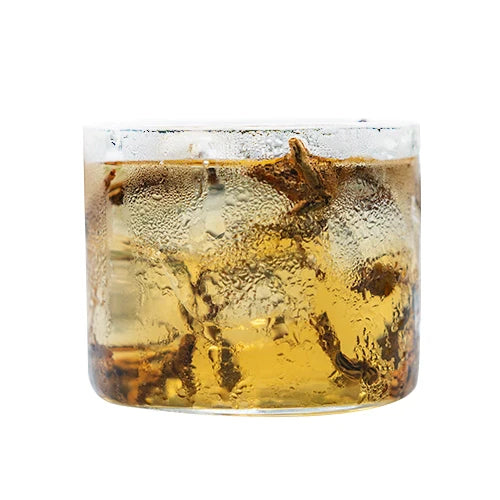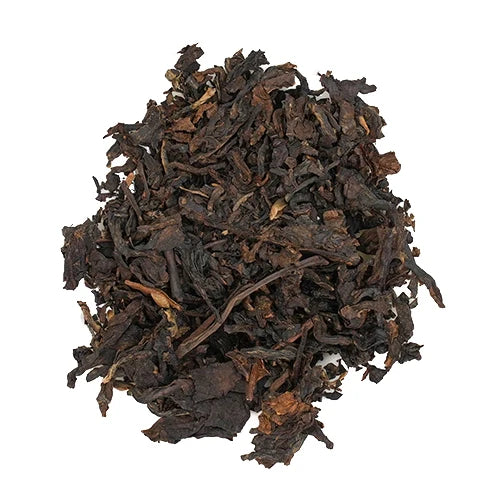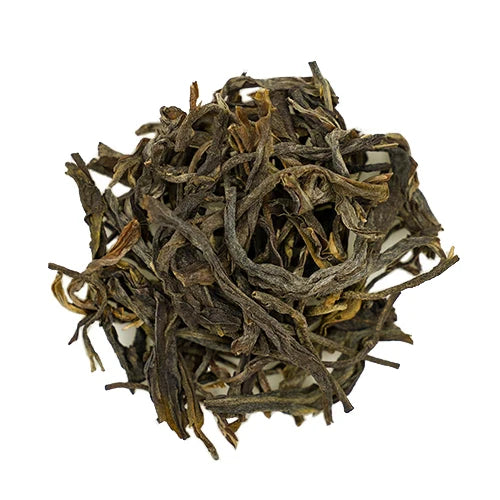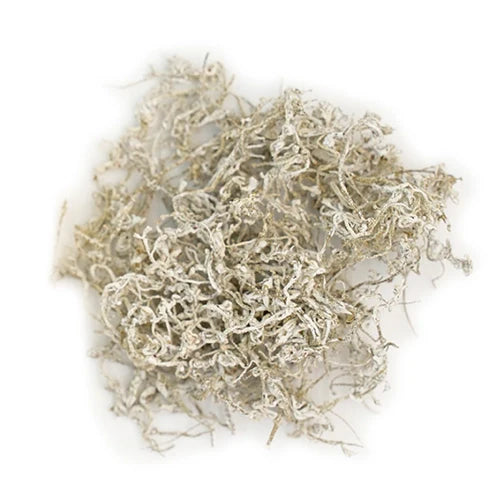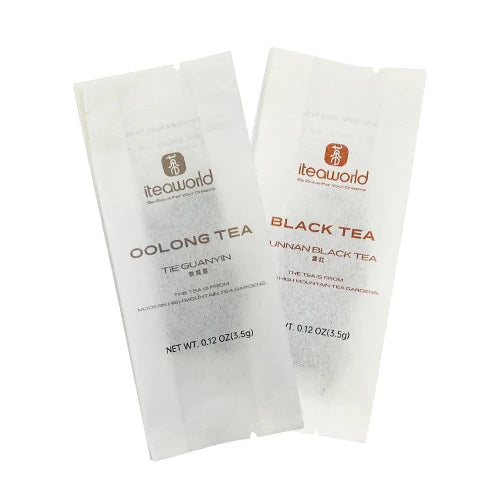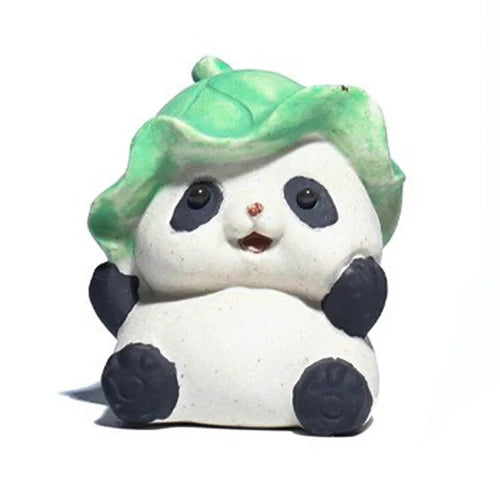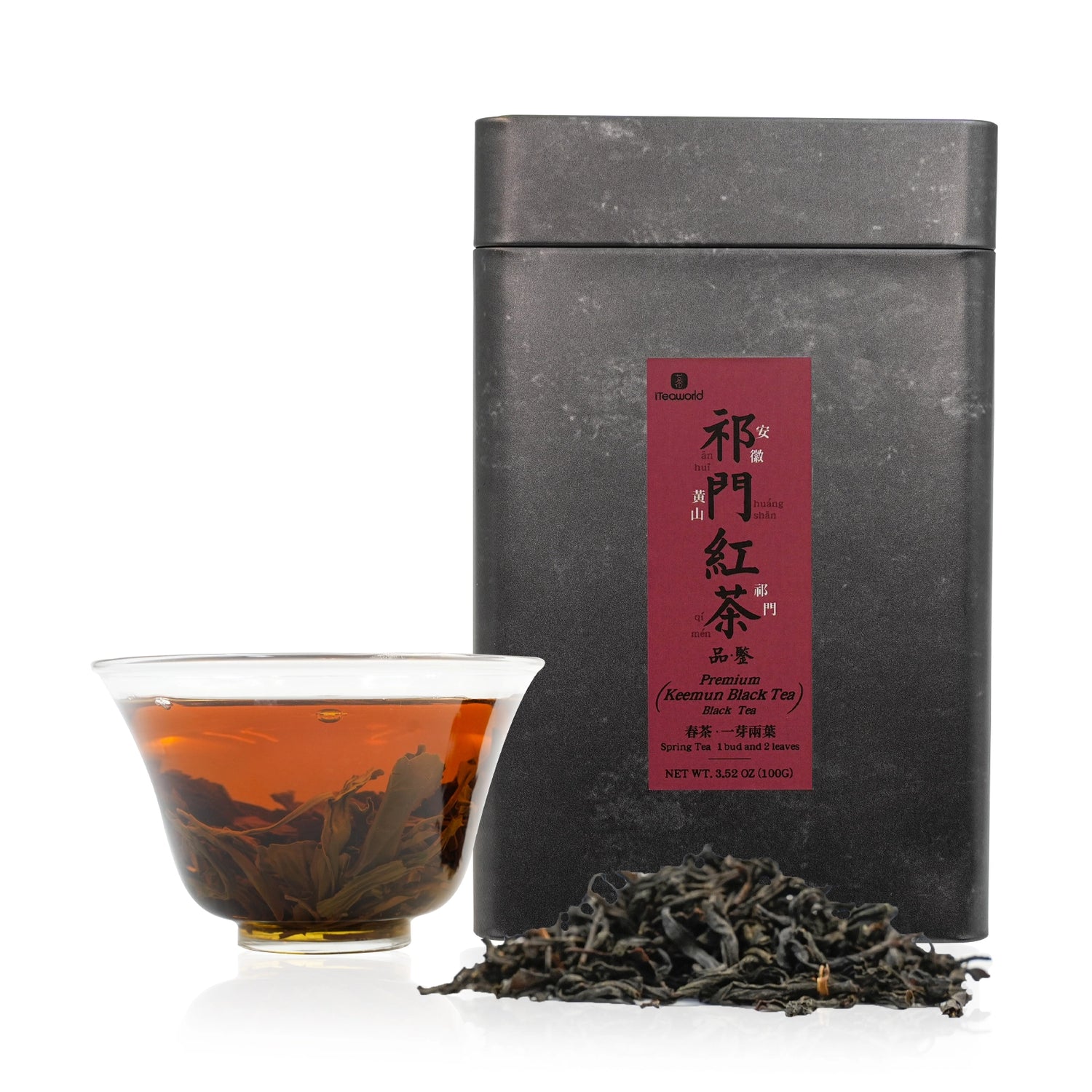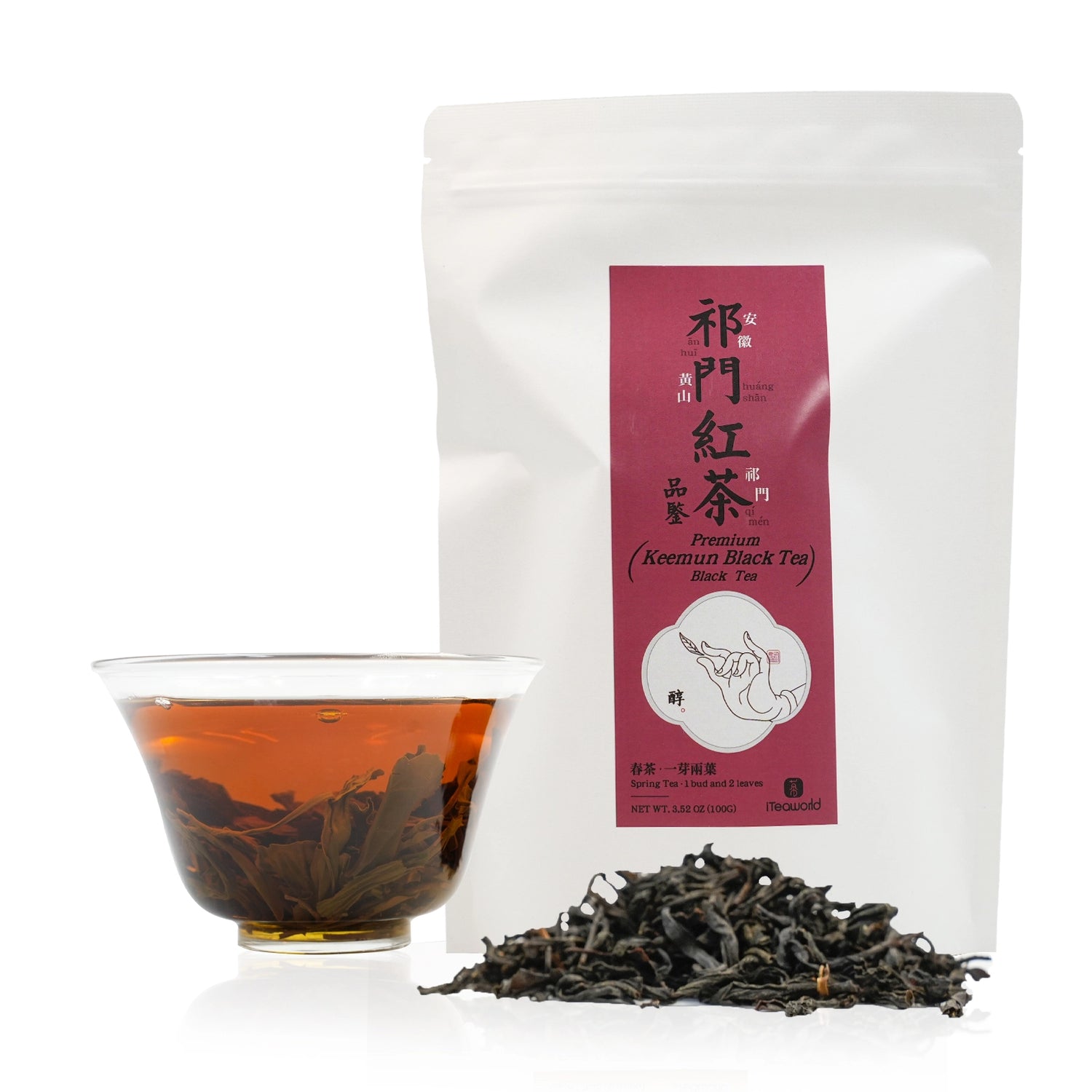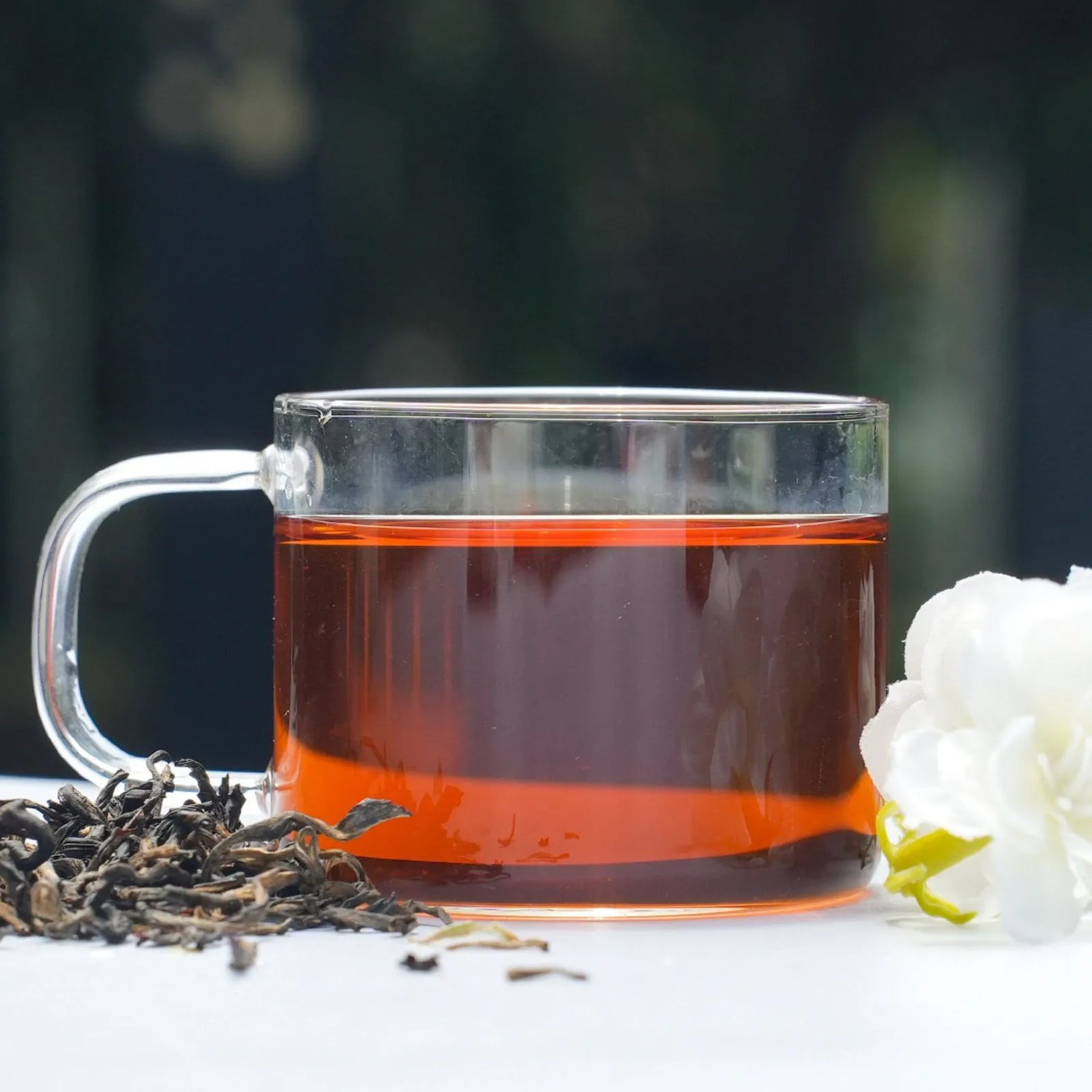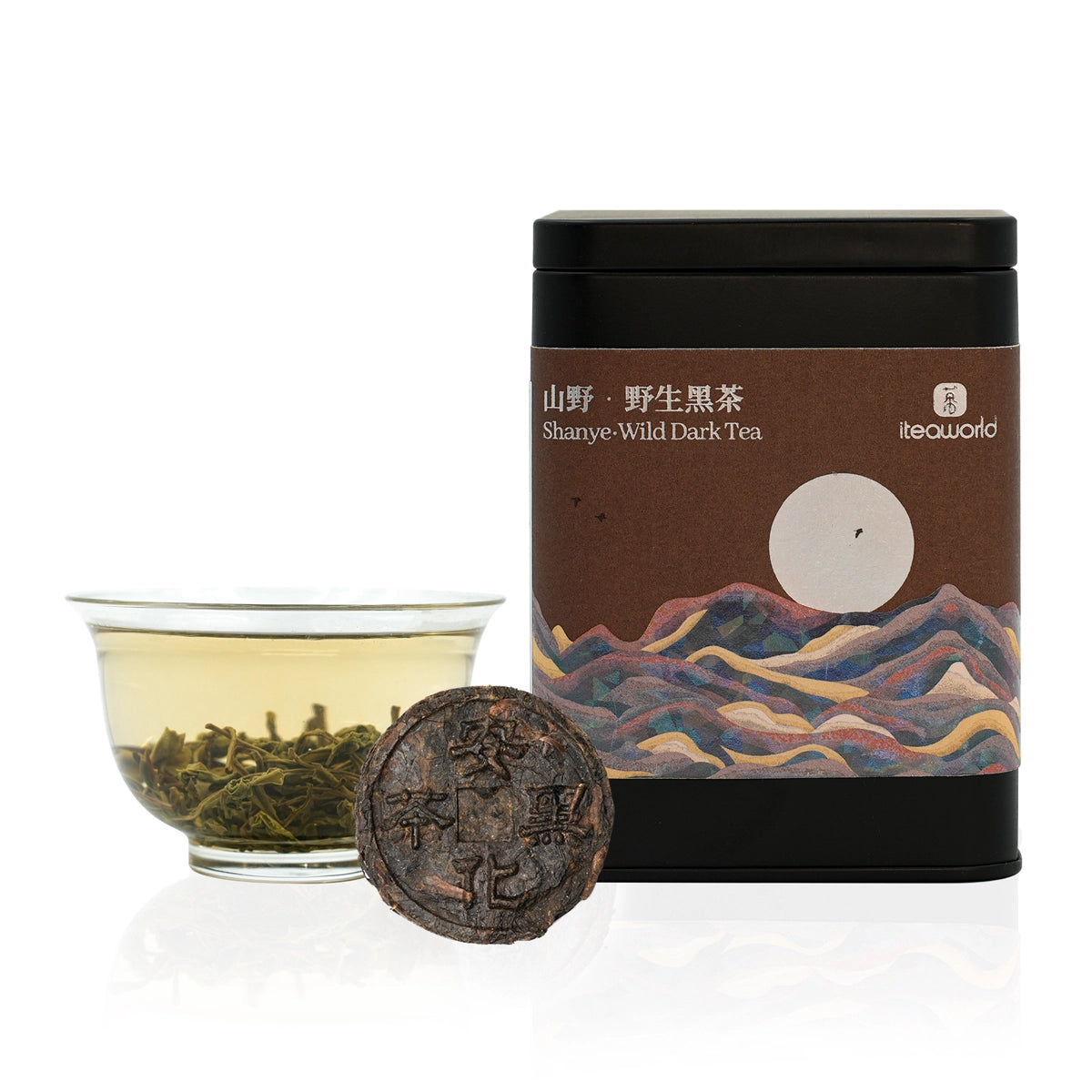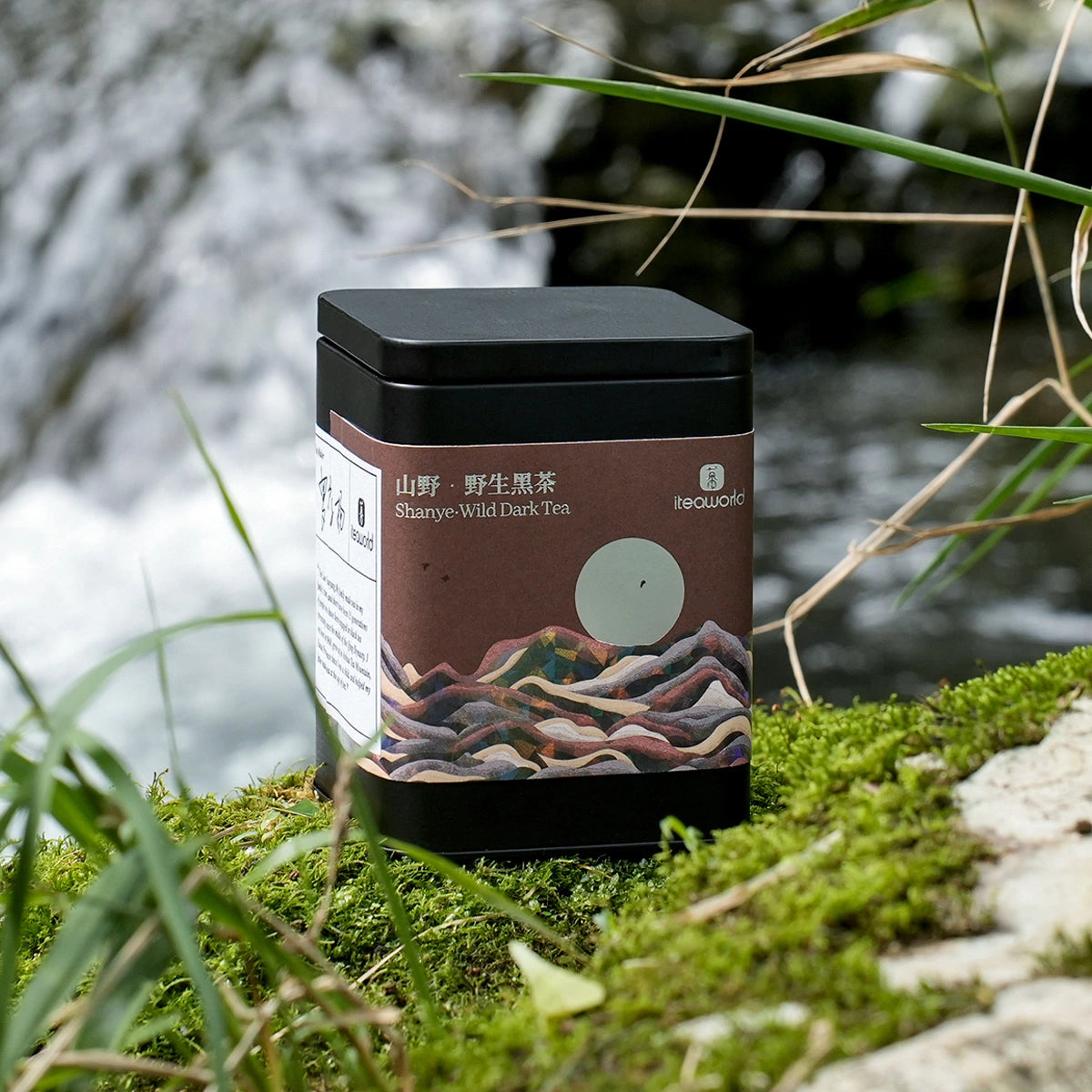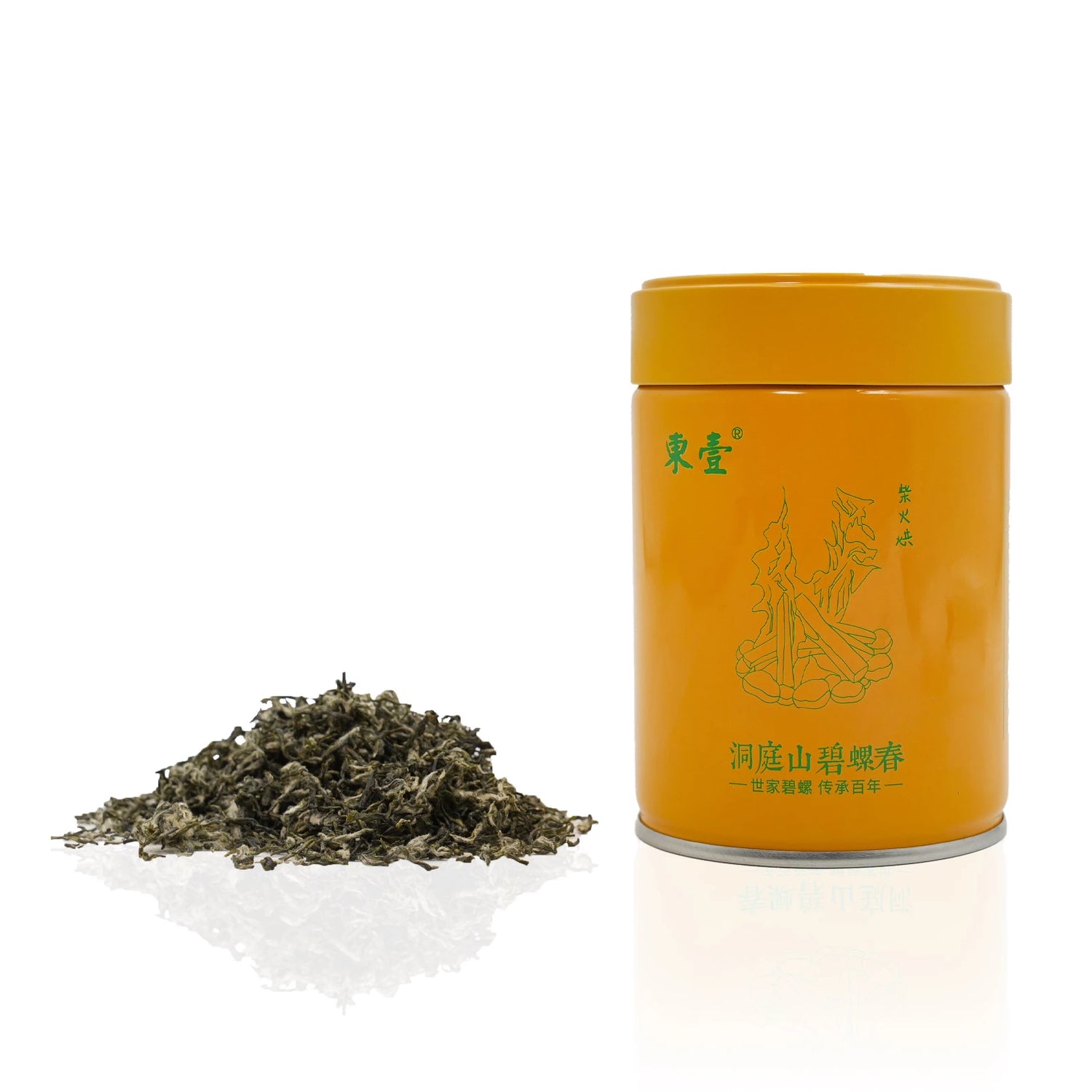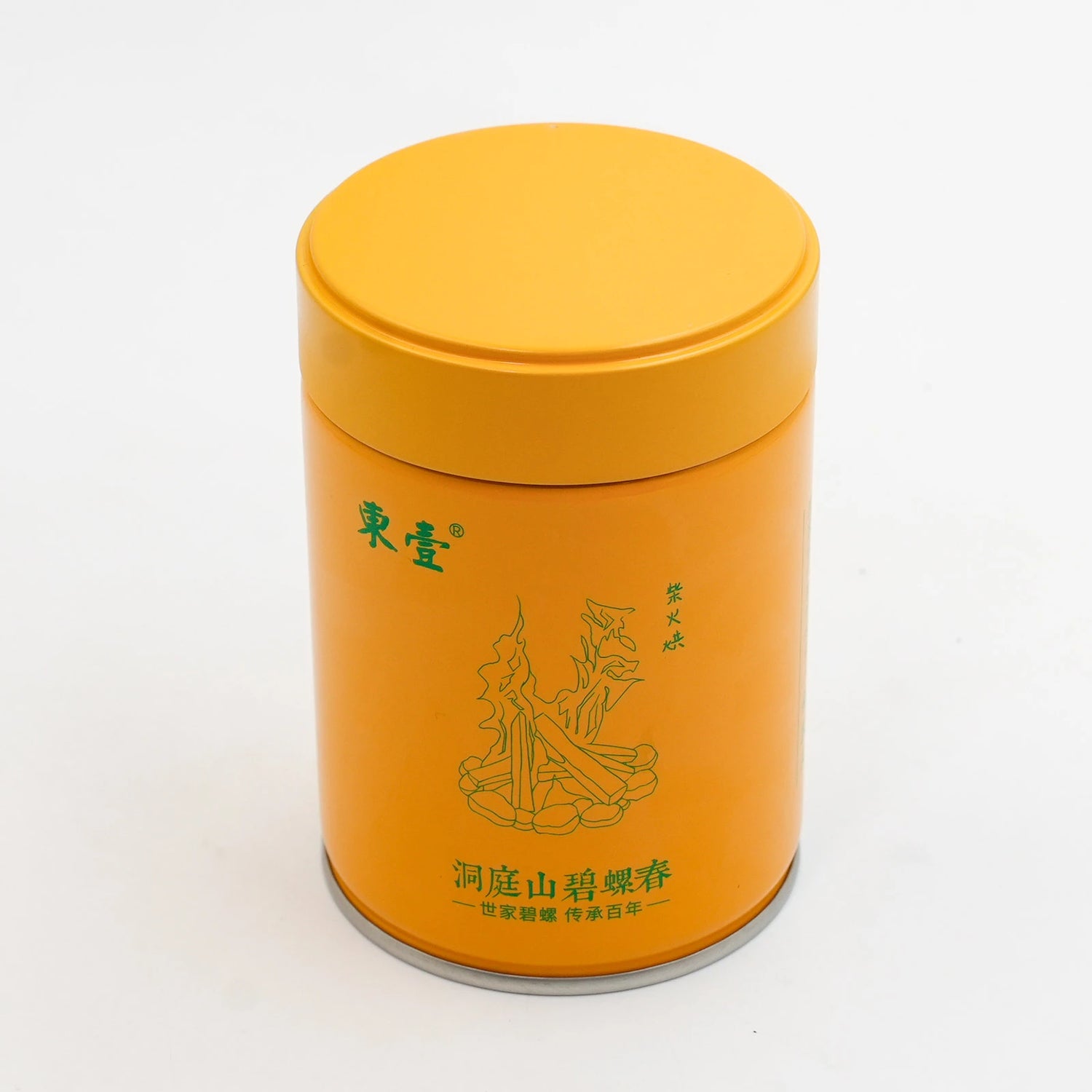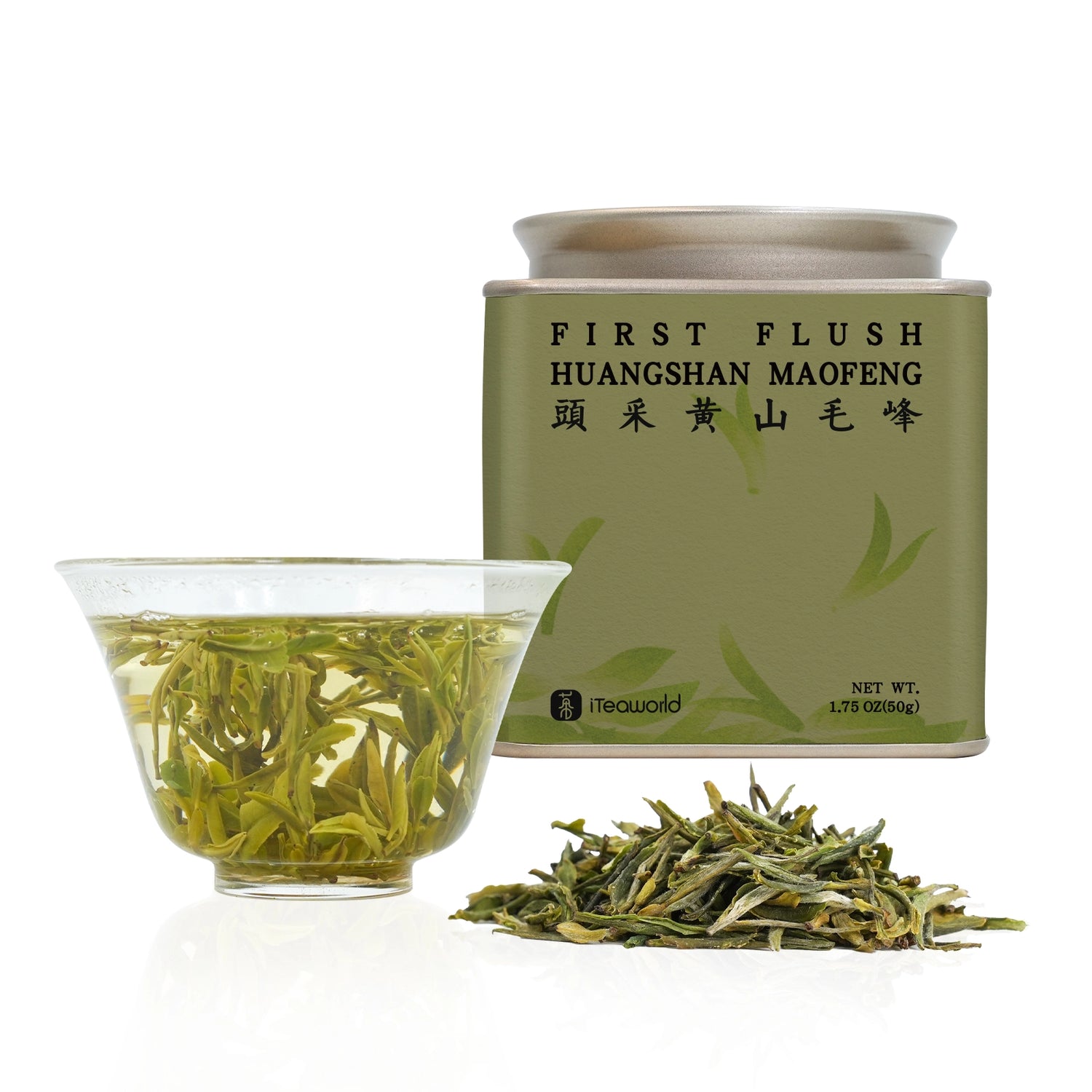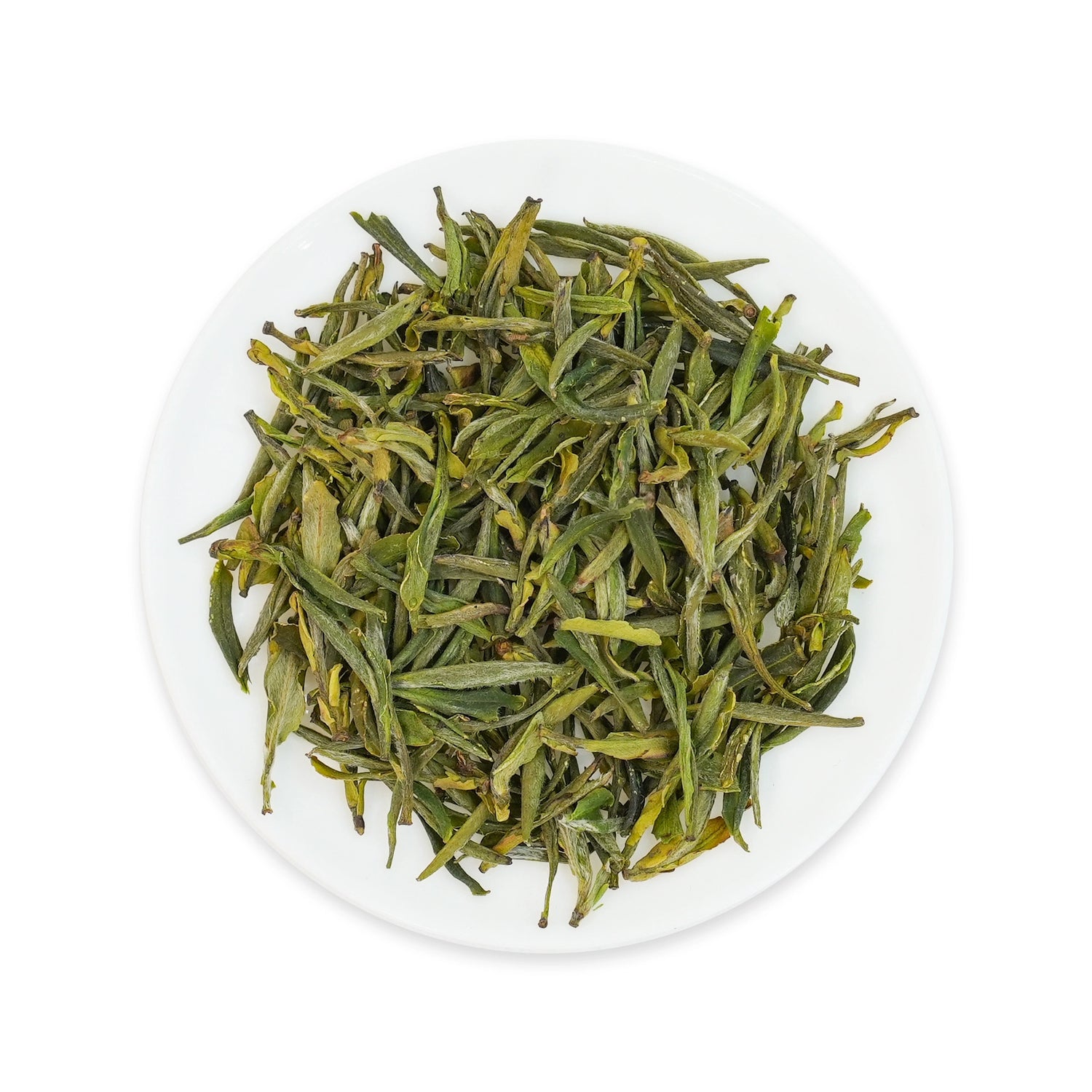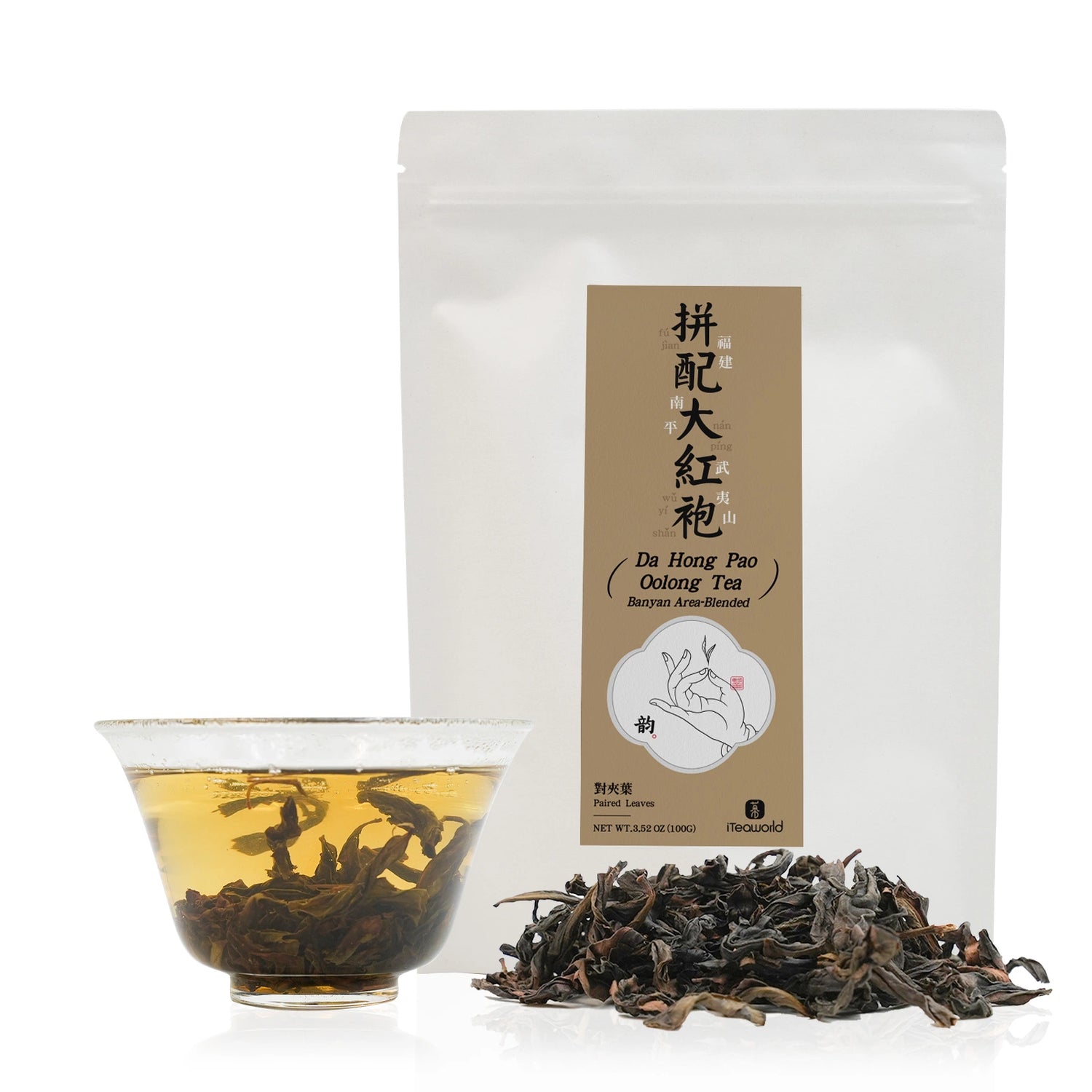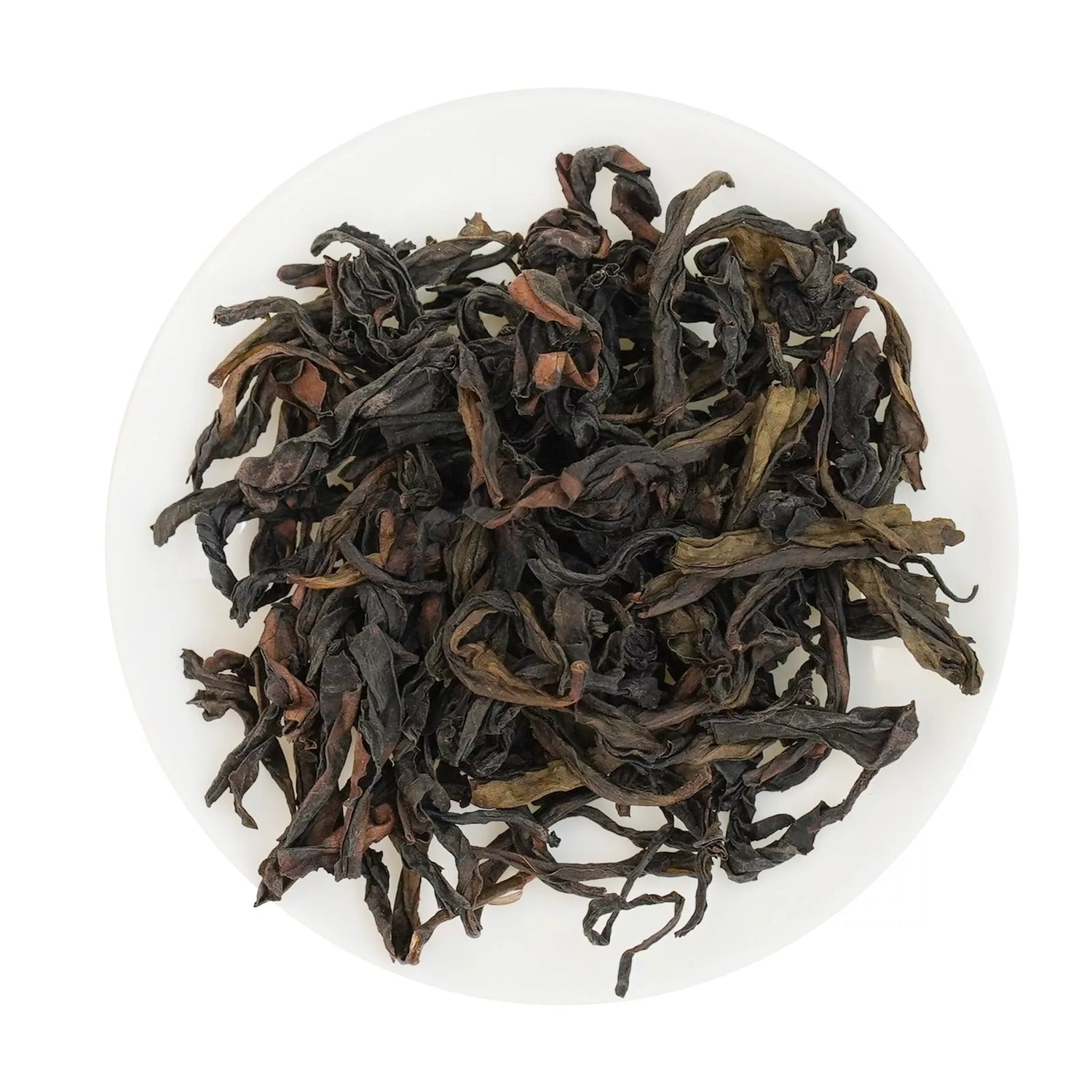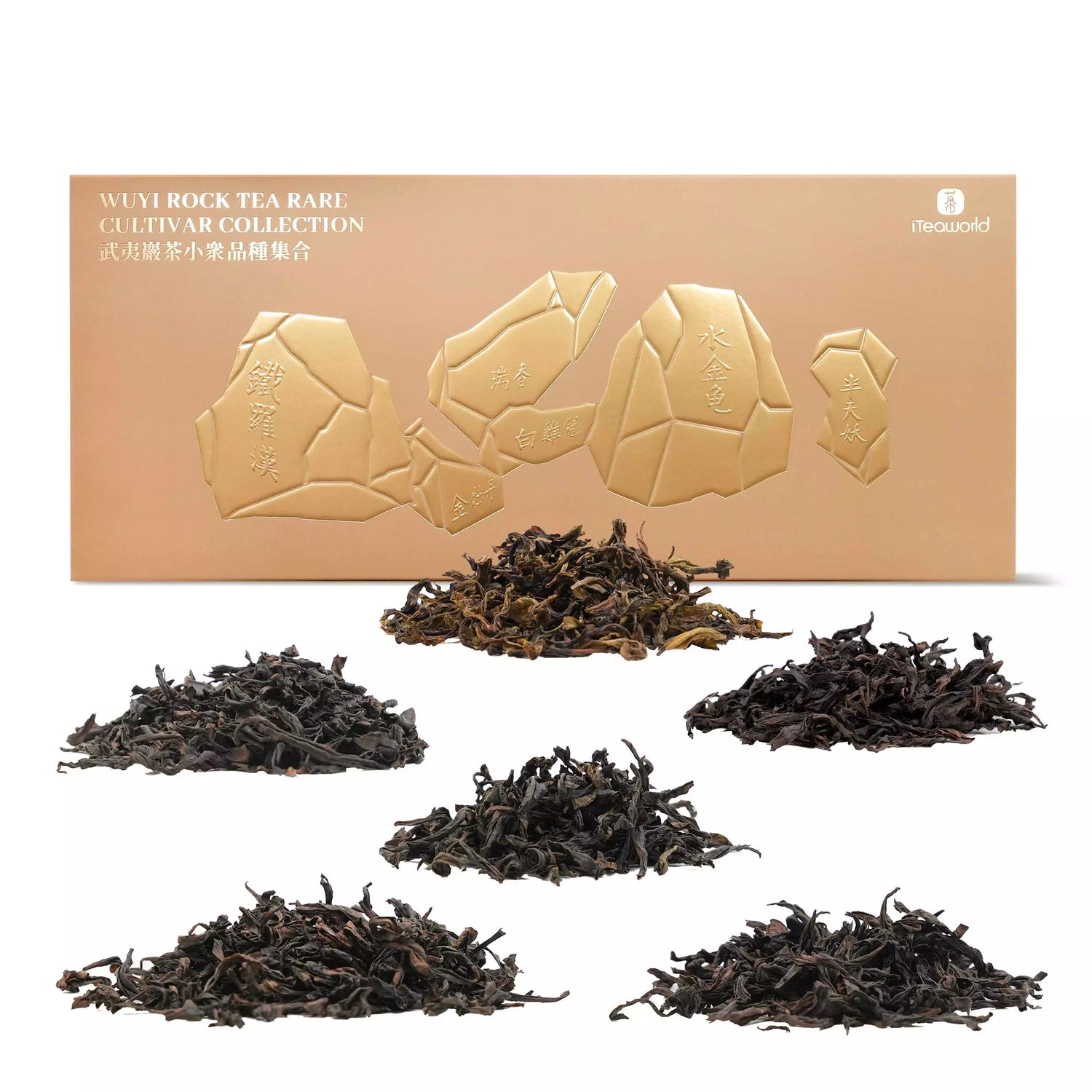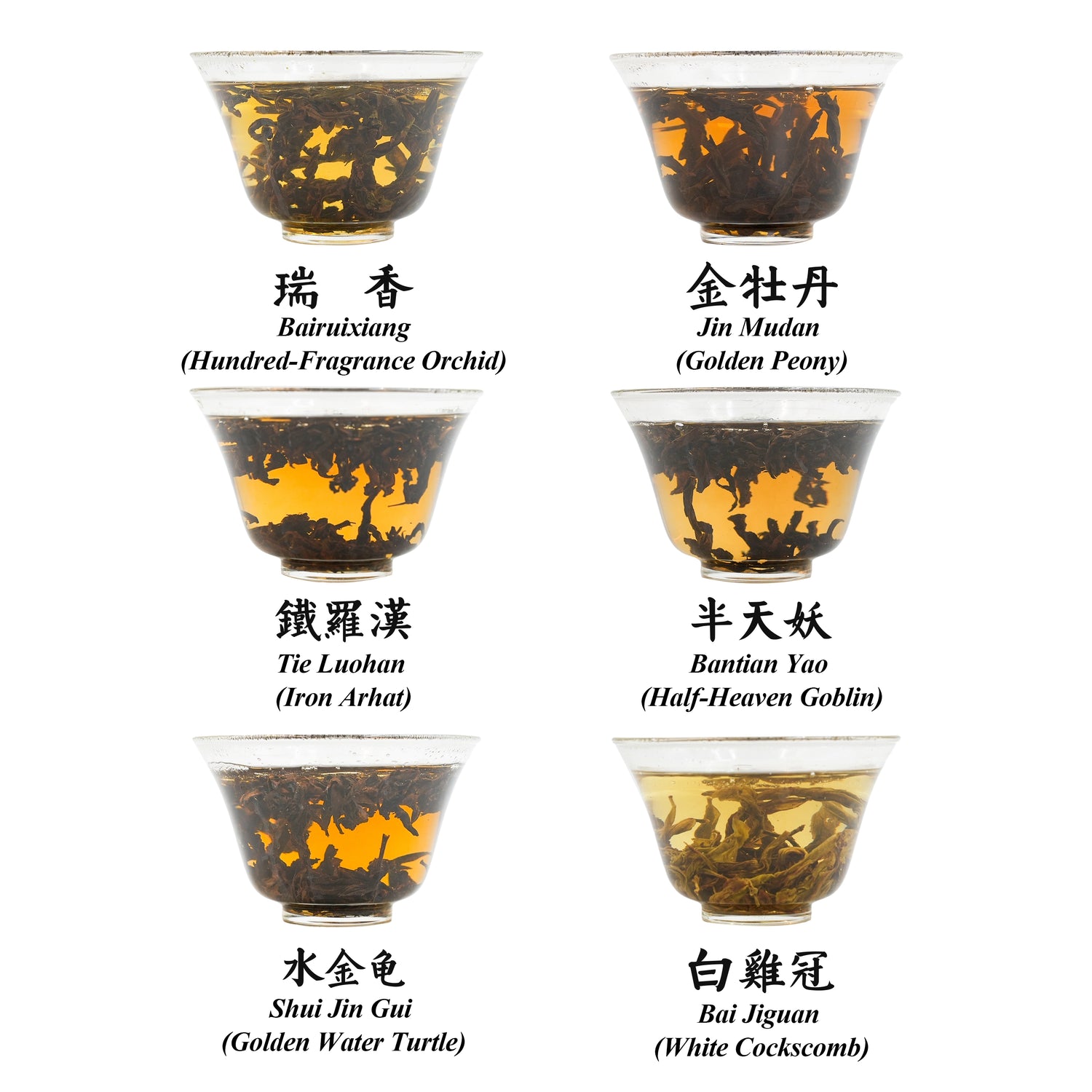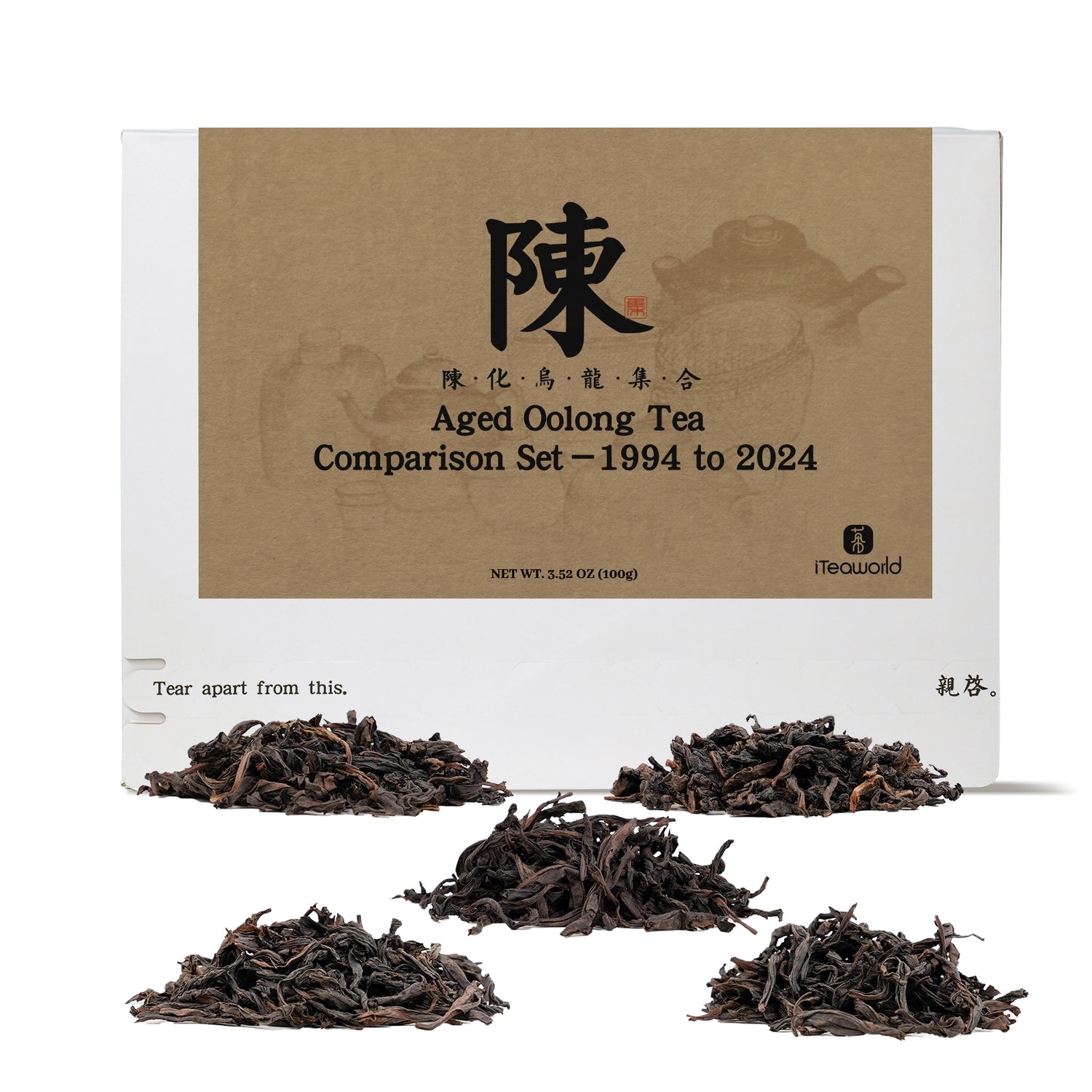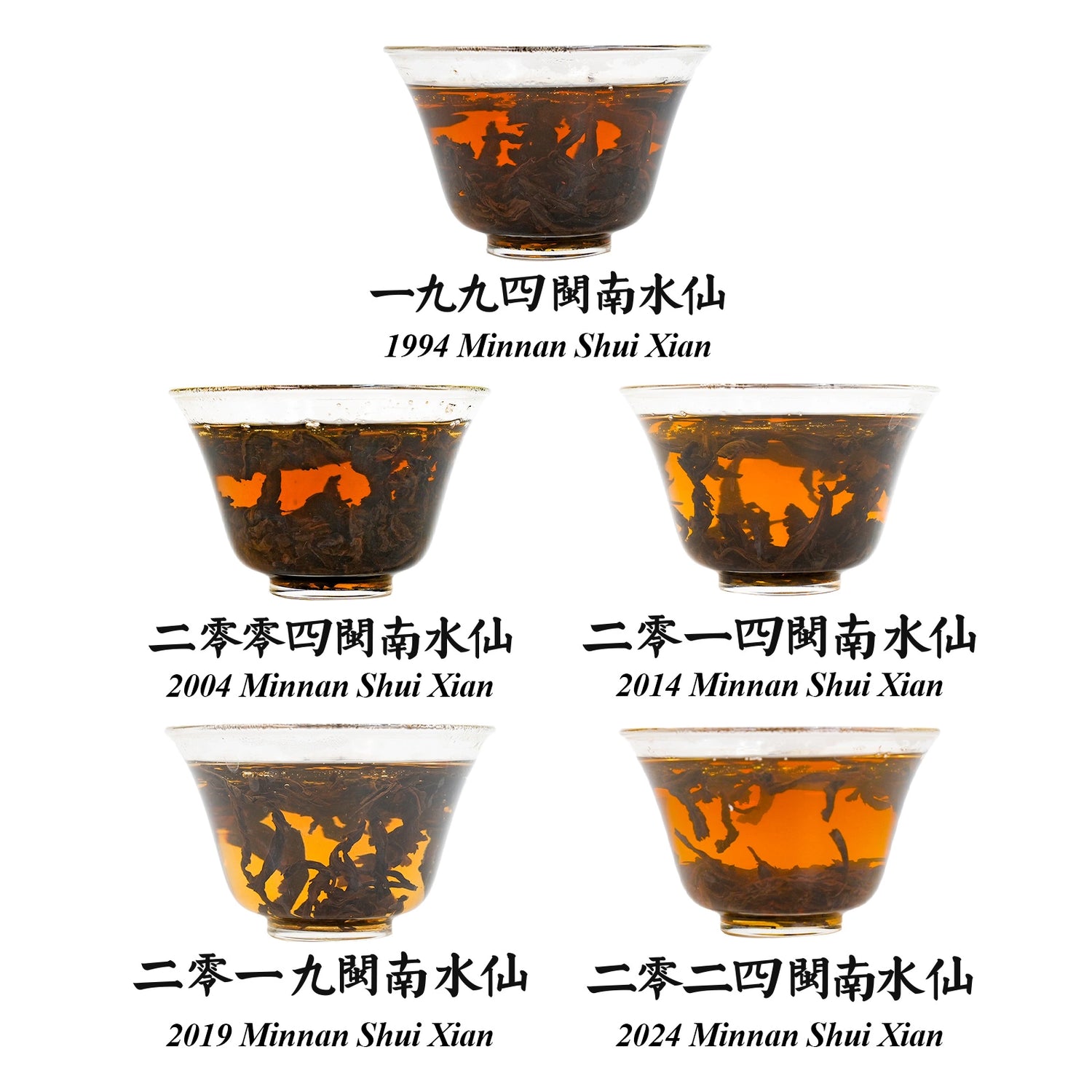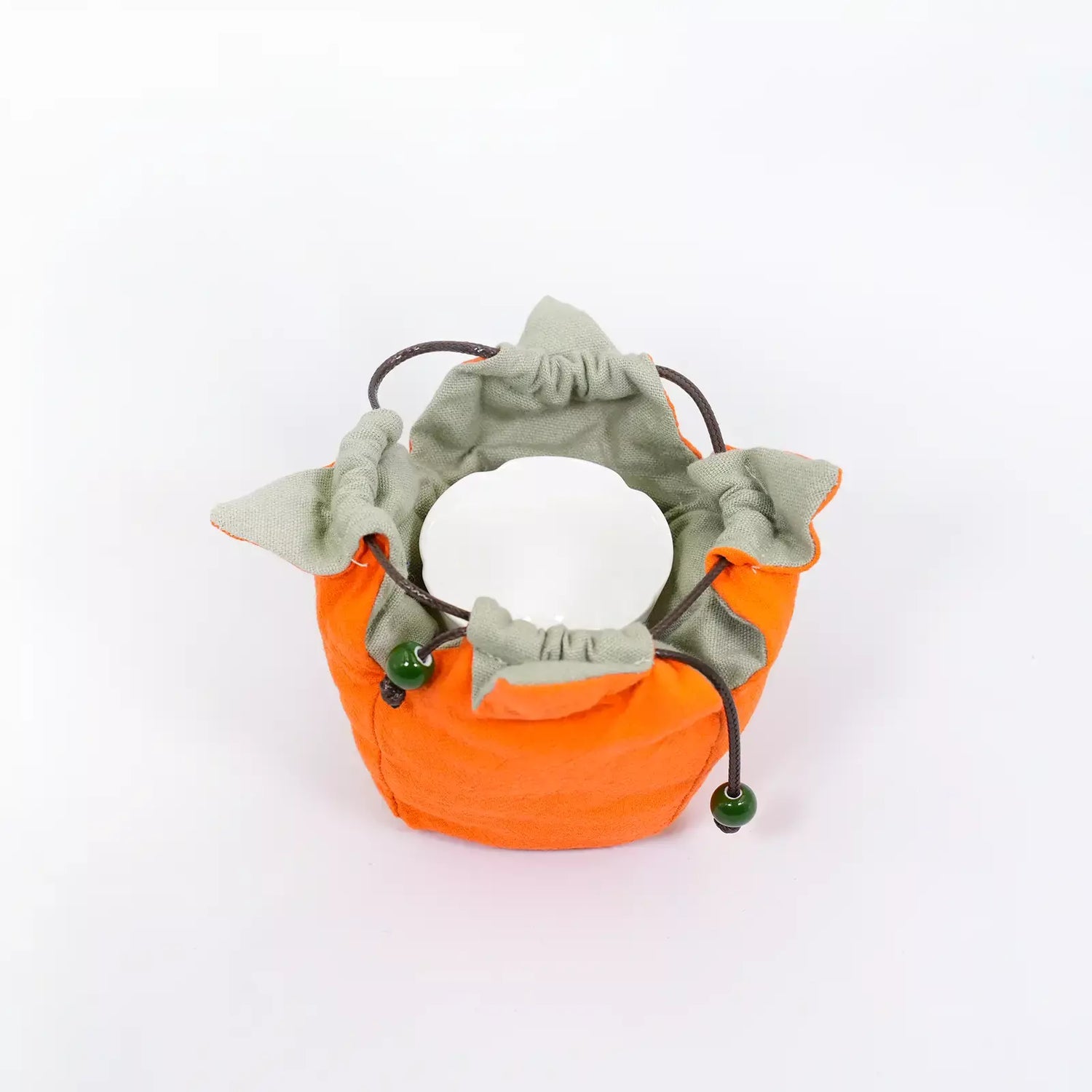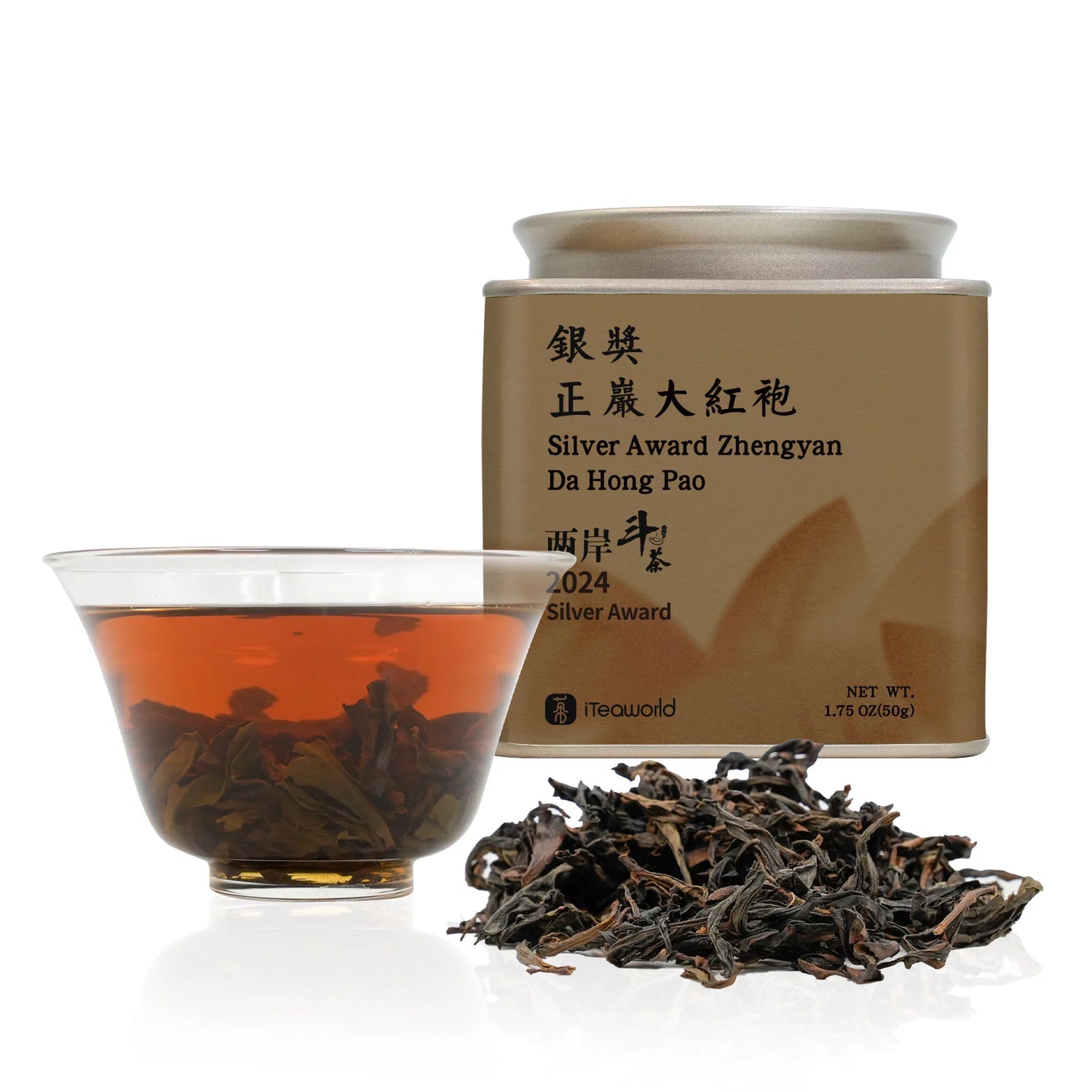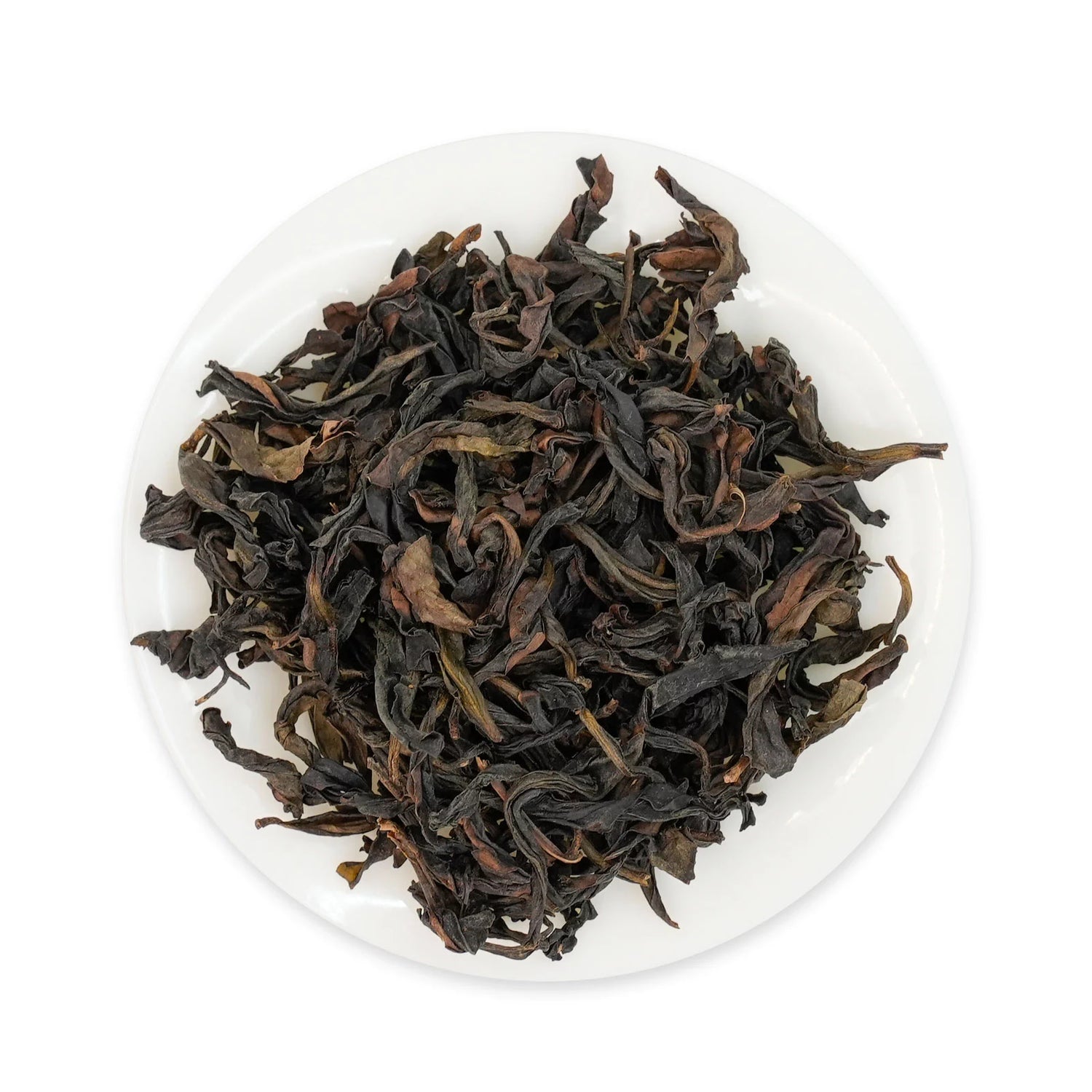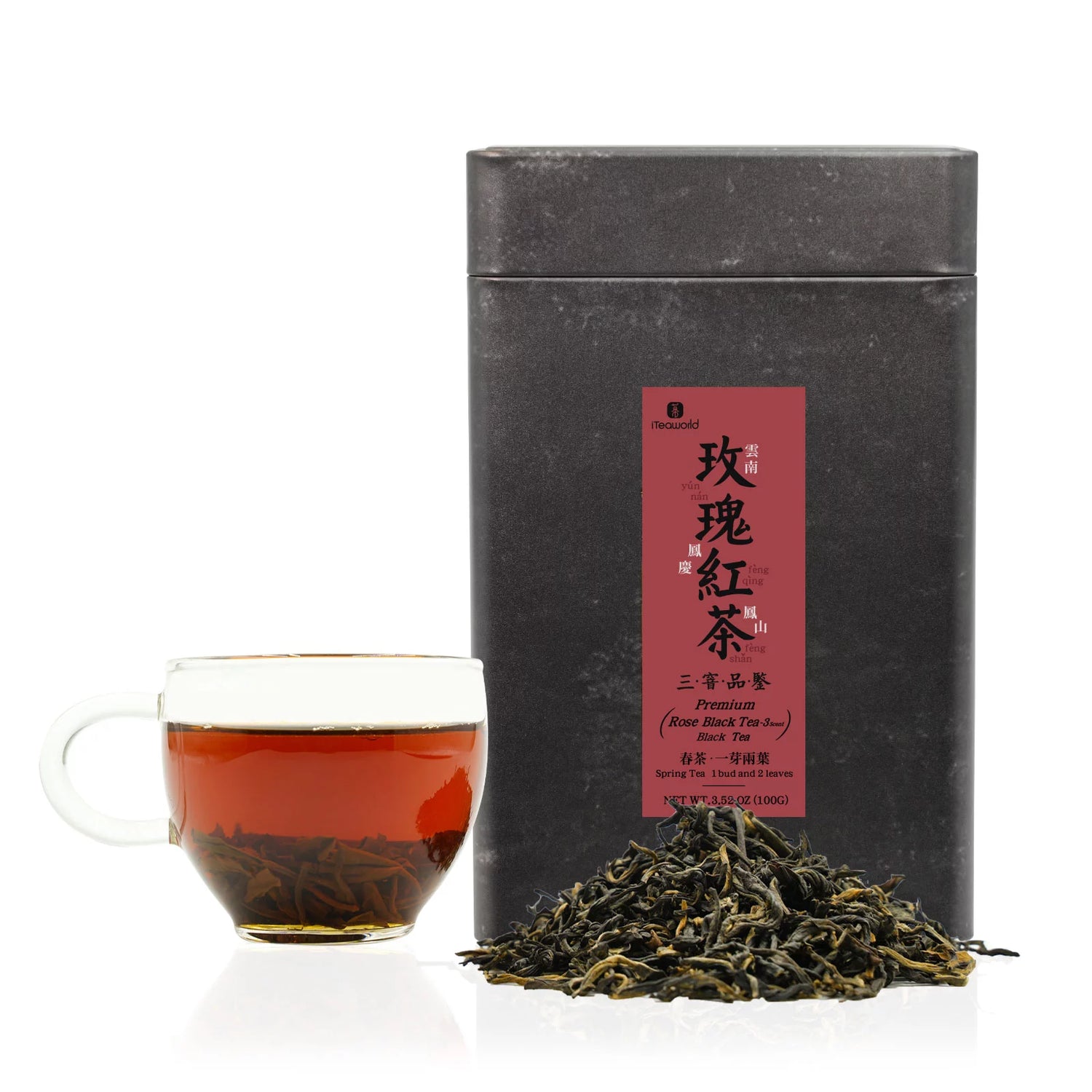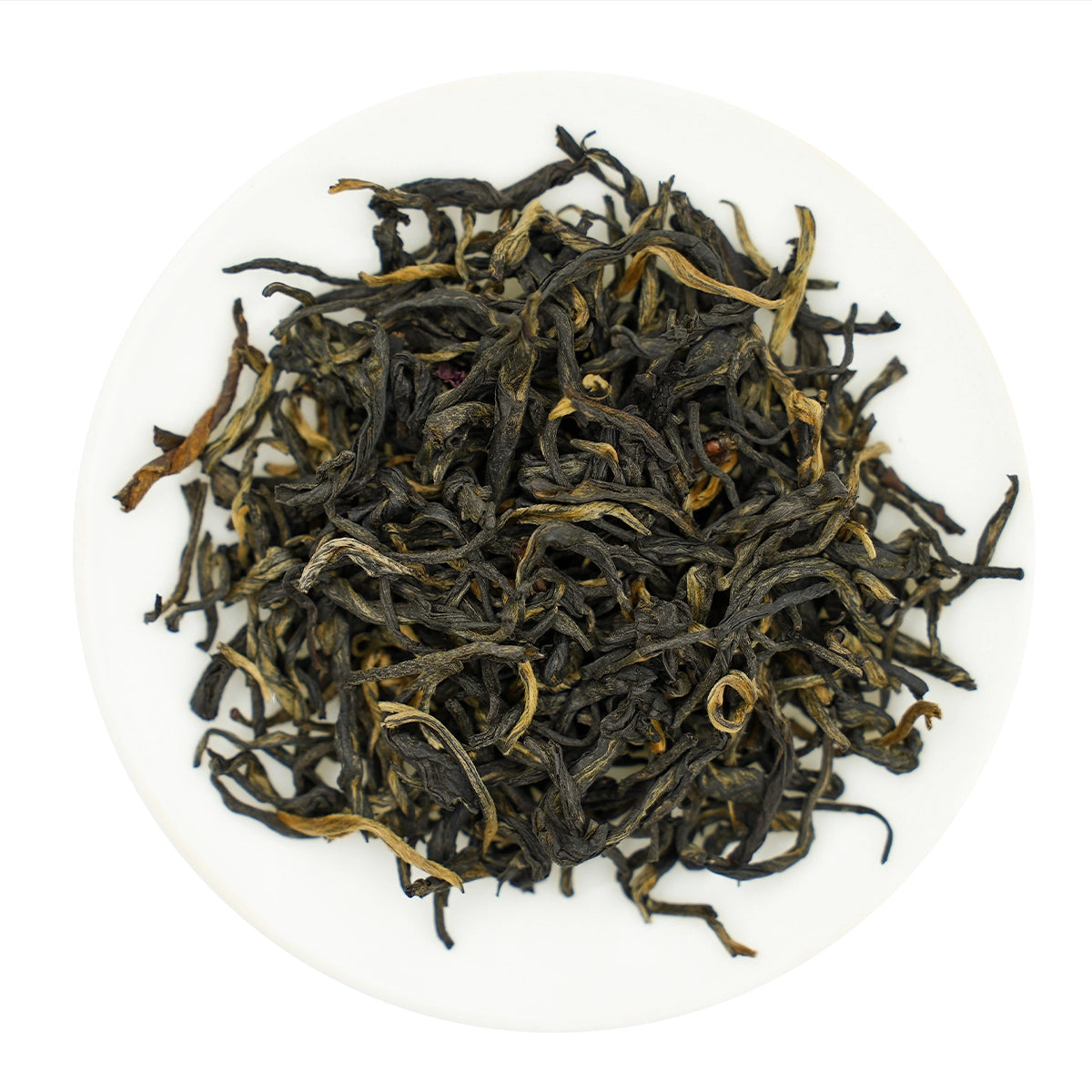Sort by:
200 products
200 products
Introduction:
This 2018 Liubao tea is sourced from high-altitude tea gardens in Guilin, Guangxi, and made from high-grade one-bud-three-leaf material. After five years of aging, the tea has undergone sufficient fermentation and transformation, developing a unique flavor profile with a distinctive betel nut aroma, a bright red liquor, and a smooth, mellow taste with a slightly sweet aftertaste.
Reasons to Recommend:
- Core Production Area: Grown in Liubao Town, Wuzhou City, Guangxi, where the average annual temperature is 21.1°C, annual rainfall is 1503.6 mm, and annual sunshine duration is 1915 hours. The abundant rainfall and vast mountainous terrain create an ideal environment for tea cultivation.
- Unique Aroma: The "betel nut aroma" of Liubao tea originates from a faint "pine smoke fragrance" in newly made tea, which transforms into the distinctive "betel nut aroma" after prolonged aging. This aroma creates a lasting "cooling" sensation in the mouth.
- Rich History: Liubao tea flourished during the Tang and Song dynasties and reached its peak during the Ming and Qing dynasties. During the Jiaqing period of the Qing dynasty, it was recognized as one of China's 24 famous teas for its unique betel nut aroma.
- Dual Benefits: Liubao dark tea holds a special place in traditional Chinese medicine. It is both cooling and warming, said to eliminate excess dampness while providing warmth when needed.
Oxidation Level: None
Roasting Level: None
Tea Garden Soil: Yellow soil
Master Blender: Liu Yongqiang
Processing Time: 2018
Best Before Date: Suitable for permanent storage
Tea Variety: Guangxi Group Variety
Recommended Purchase:
This authentic Keemun Black Tea from the core production area of Qimen County, Anhui, boasts a refined aroma that lingers, featuring unique notes of apple and orchid. It's best enjoyed plain to savor its natural floral and honey-like sweetness with a silky smooth finish. If you prefer bold flavors and plan to add milk and sugar, this tea might not be the perfect match for your taste.
Product Details:
Origin: Guanghui Village, Likou Town, Qimen County, Huangshan, Anhui Province
Harvest Date: April 15, 2024
Grade: Second Grade (Mao Feng), one bud and two leaves
Tea Cultivar: Qimen Zhuye (Qimen Broad Leaf Variety)
Craftsmanship: Traditional methods by tea master Feng Guochang
Flavor Profile: Distinctive "Keemun aroma" with apple and orchid notes, a refined and long-lasting fragrance, prominent floral and honey tones, and a sweet, smooth finish.
Highlight: An authentic Keemun Black Tea made from local tea trees in the core region, offering a perfect balance of flavor and richness—an excellent choice for everyday enjoyment.
About Keemun Black Tea:
Keemun Black Tea (or Qimen Hong Cha) originates from the Qimen region in Anhui Province, China, and its crafting technique is recognized as a UNESCO Intangible Cultural Heritage. Known as the "Champagne of Black Teas," it captivates tea lovers with its signature floral, fruity, and subtle smoky notes. During Victorian England, Keemun Black Tea was considered a luxury, often gracing royal and aristocratic tea tables. It became a staple in classic English Breakfast and afternoon tea blends. Compared to Ceylon and Assam teas, Keemun is more mellow and smooth, making it a refined choice for pairing with milk or sugar. Over time, it has earned its place as a luxurious favorite among Western black tea enthusiasts.
How to Brew
Water Temp: 203°F(or 95℃)
Tea-to-Water: 1g per 50ml
Steep Time: 20 sec for first 3 steeps, add 5 sec each time after
Teaware: White porcelain gaiwan
Re-Steep: 5-7 times
Introduction:
This Jasmine Black Tea is meticulously selected from the spring harvest of 2024. Combining Yunnan black tea from Fengqing, Yunnan, at elevations of approximately 1600 meters, with jasmine flowers from Hengxian, Guangxi, the exceptional growing conditions impart a unique and richly layered flavor to this tea. The plucking standard of one bud and two leaves, paired with fresh jasmine flowers and three scenting processes, ensures a harmonious blend of soft jasmine fragrance and the robust, mellow taste of black tea.
Reasons to Recommend:
- Core Production Area: The black tea is sourced from Fengshan Town, Fengqing County, Yunnan, where the average annual temperature ranges from 18°C to 22°C, with significant daily temperature variations and annual precipitation of 1200-1700 mm. The jasmine flowers are from Hengzhou, Guangxi, which enjoys abundant sunshine, annual rainfall of 1450 mm, and soil rich in organic matter, providing an ideal growing environment.
- Scenting Process: Yunnan black tea serves as the base, while jasmine flowers from Hengzhou, Guangxi, are used for scenting. The traditional scenting process is repeated three times, resulting in a tea where the floral aroma and tea fragrance are perfectly balanced.
- High-Mountain Tea Gardens: Since ancient times, high mountains shrouded in mist have produced premium teas. This tea thrives in such environments, where lush vegetation and organic-rich soil, combined with extreme daily temperature fluctuations, enhance the accumulation of flavorful compounds in the leaves.
Oxidation Level: High
Roasting Level: None
Tea Garden Soil: Red soil
Processing Time: August 2024
Best Before Date: 24 months
Tea Variety: Yunnan Tea No. 10
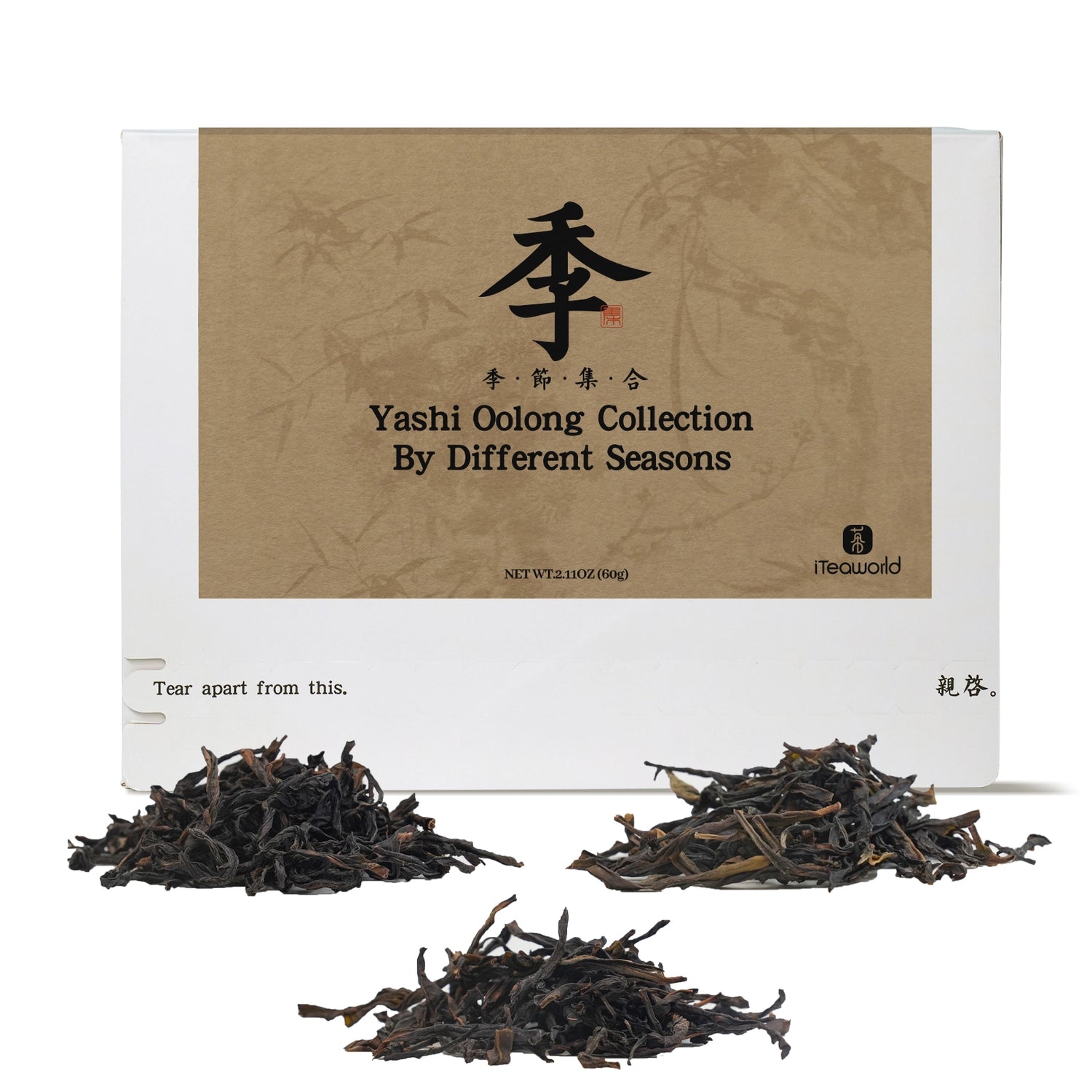
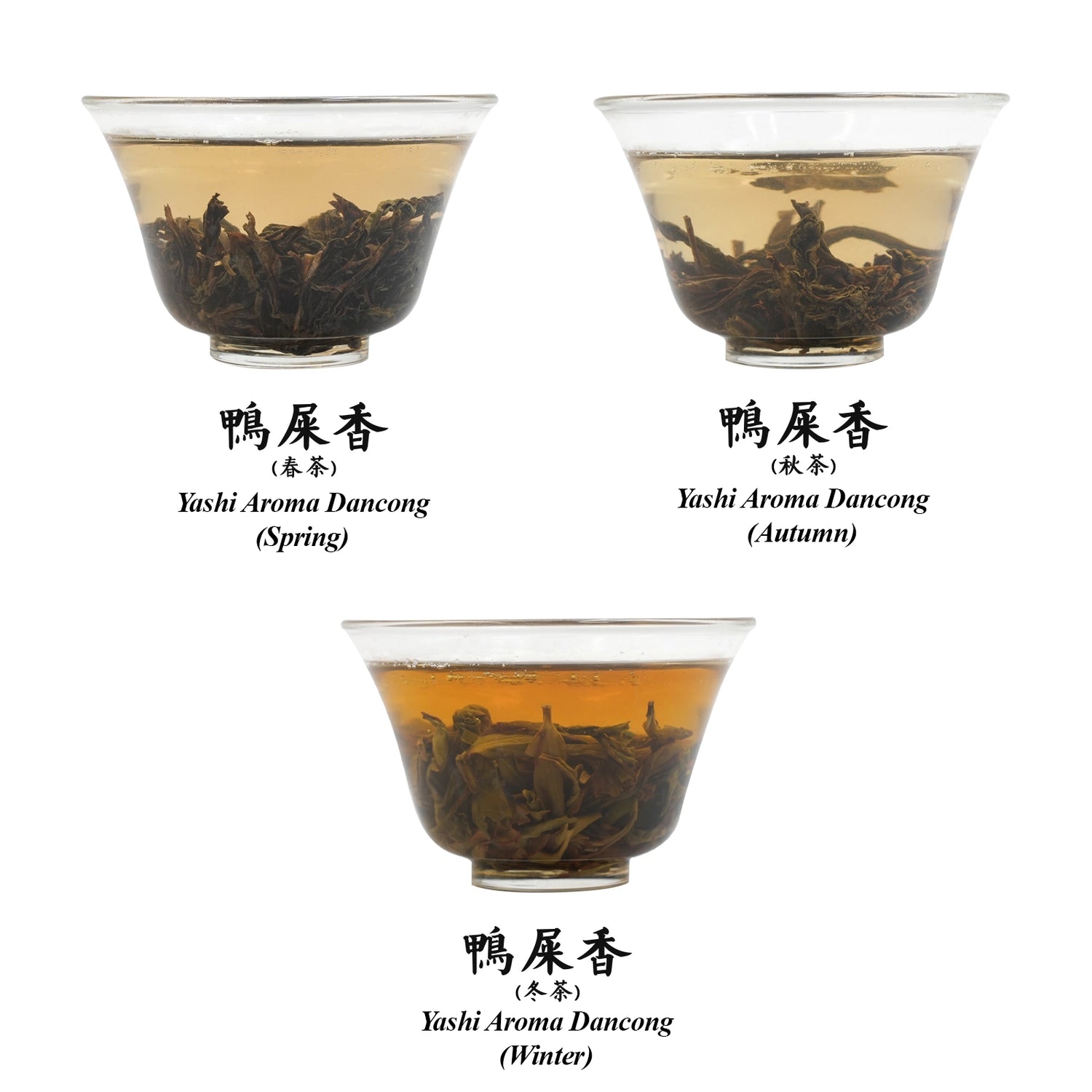
Ya Shi Xiang oolong Comparison Set – Spring, Autumn & Winter Varieties 60g
$19.99 USD
Unit price perYa Shi Xiang oolong Comparison Set – Spring, Autumn & Winter Varieties 60g
$19.99 USD
Unit price perSeasonality of Oolong Tea
Oolong tea can be harvested in all four seasons: spring, summer, autumn, and winter. However, Wuyi rock tea is only harvested in the spring. Oolong teas picked in the midday usually have the most pronounced aroma. Summer teas are mostly used in milk tea and are less common in loose leaf tea markets.
Spring teas tend to grow slower, resulting in higher levels of amino acids and tea polyphenols, with a lower ratio of phenols to amino acids. However, due to the frequent rainy weather in tea-growing areas like Fujian and Guangdong, spring teas may have less aromatic compounds than autumn or winter teas. Therefore, autumn and winter oolongs tend to have a stronger aroma. Winter oolongs, in particular, may even have a crisp, cold-like fragrance. Spring oolongs, on the other hand, tend to be richer in substances, offering a sweeter and fresher taste.
This product features three different seasonal Duck Shit Aroma teas from the same tea master in Hutou Village, Fenghuang Town. The oxidation and roasting levels are different for each, as oolong tea is all about adjusting to the leaves' conditions. Winter leaves are thinner, so oxidation and roasting are usually lighter. Try these three teas to see if you can notice the flavor differences between the seasons.
Products Included:
- Ya Shi Xiang (Duck Shit) Dan Cong Oolong(Spring) 20g
- Ya Shi Xiang (Duck Shit) Dan Cong Oolong(Autumn) 20g
- Ya Shi Xiang (Duck Shit) Dan Cong Oolong(Winter) 20g
Origin:Hutou Village, Fenghuang Town, Chaoan District, Chaozhou City, Guangdong Province, China
Master Blender:Lin Shupeng
Processing Time:November 20, 2024
Best Before Date:36months
Tea Variety:Ya Shi Xiang (Duck Shit) Dan Cong variety
Altitude:300-400 meters
Soil Type:yellow soil
Oxidation Level: Medium oxidation (40-50%)
Roasting Level:
- Spring: Two roasts, medium fire, around 100°C (212°F)
- Autumn: Two roasts, medium fire, around 100°C (212°F)
- Winter: One roast, light fire, around 80°C (176°F)Very light roast, 70-80°C (158-176°F)
Roasting Method (Charcoal or Electric):charcoal briquetting
Brewing Recommendations:
Chinese-Style Oolong Brewing
- Teaware: Gaiwan or clay teapot
- Water Temp: 212°F (100°C)
- Tea-to-Water Ratio: 1g per 0.7 oz (20ml)
- Steep Time: 15 sec (1-3 steeps), add 5-10 sec after
- Re-Steep: Up to 7 times
Western-Style Oolong Brewing
- Teaware: Teapot, infuser, or French press
- Water Temp: 212°F (100°C)
- Tea-to-Water Ratio: 1 tsp (2-3g) per 8 oz (240ml)
- Steep Time: 3-5 minutes
- Re-Steep: Up to 3 times, adding 1minutes each time
Wild black tea is produced in Anhua County, Yiyang City, Hunan Province, the birthplace of Anhua black tea. The tea gardens are primarily located in mountainous areas at an altitude of 1000 meters. Grown in a pristine ecological environment with abundant vegetation, this wild black tea is cultivated without the use of chemical fertilizers and pesticides, resulting in limited yield with only one spring harvest per year. Processed using the Qiujiang Bopian Tea technique, it offers a pure and long-lasting pine-smoke aroma. The taste is rich, mellow, and sweet, with a lasting aftertaste and a unique pine-smoke fragrance. After consumption, a lingering sweetness remains in the mouth, leaving a memorable and unforgettable experience. Even after multiple infusions, it retains its distinctive aroma.
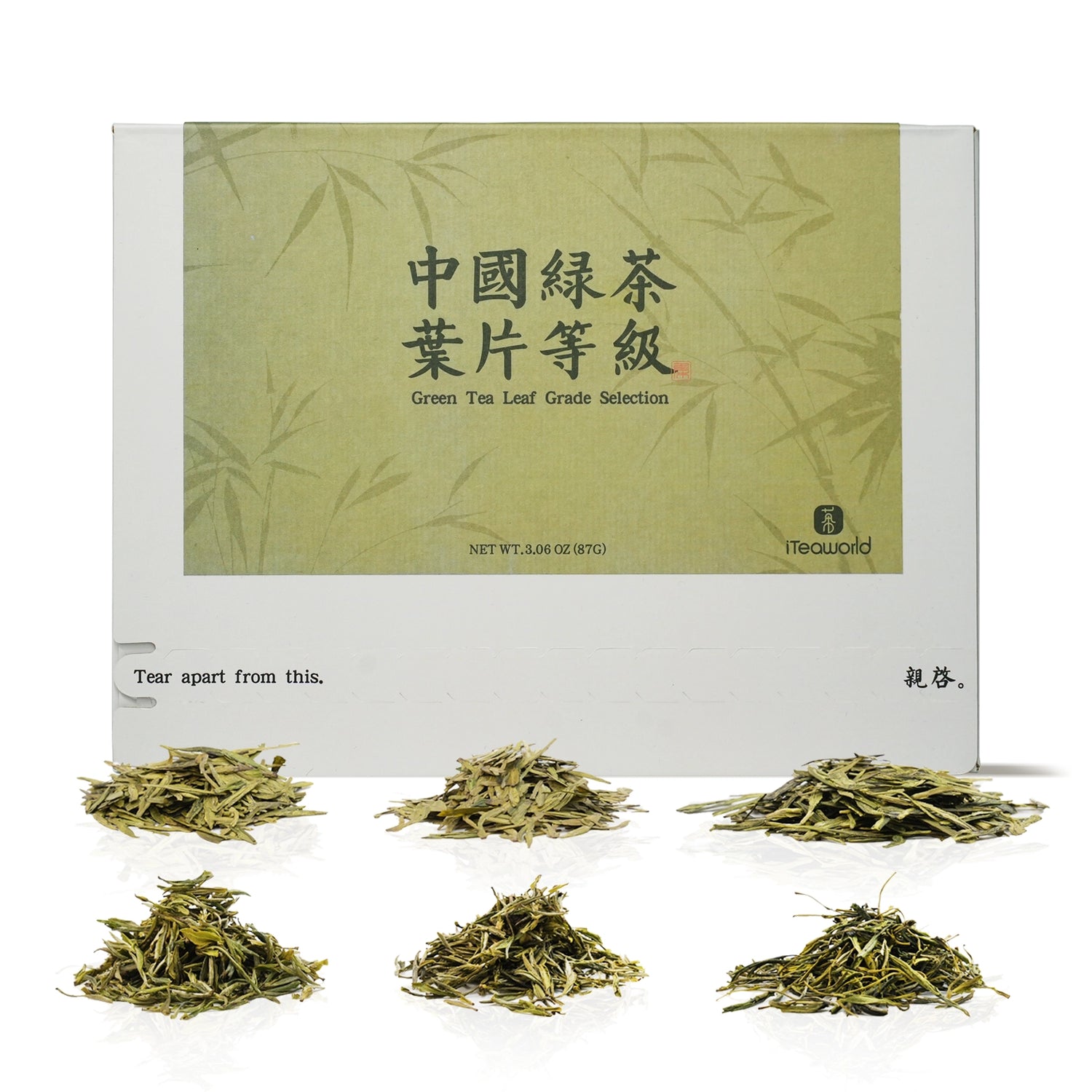
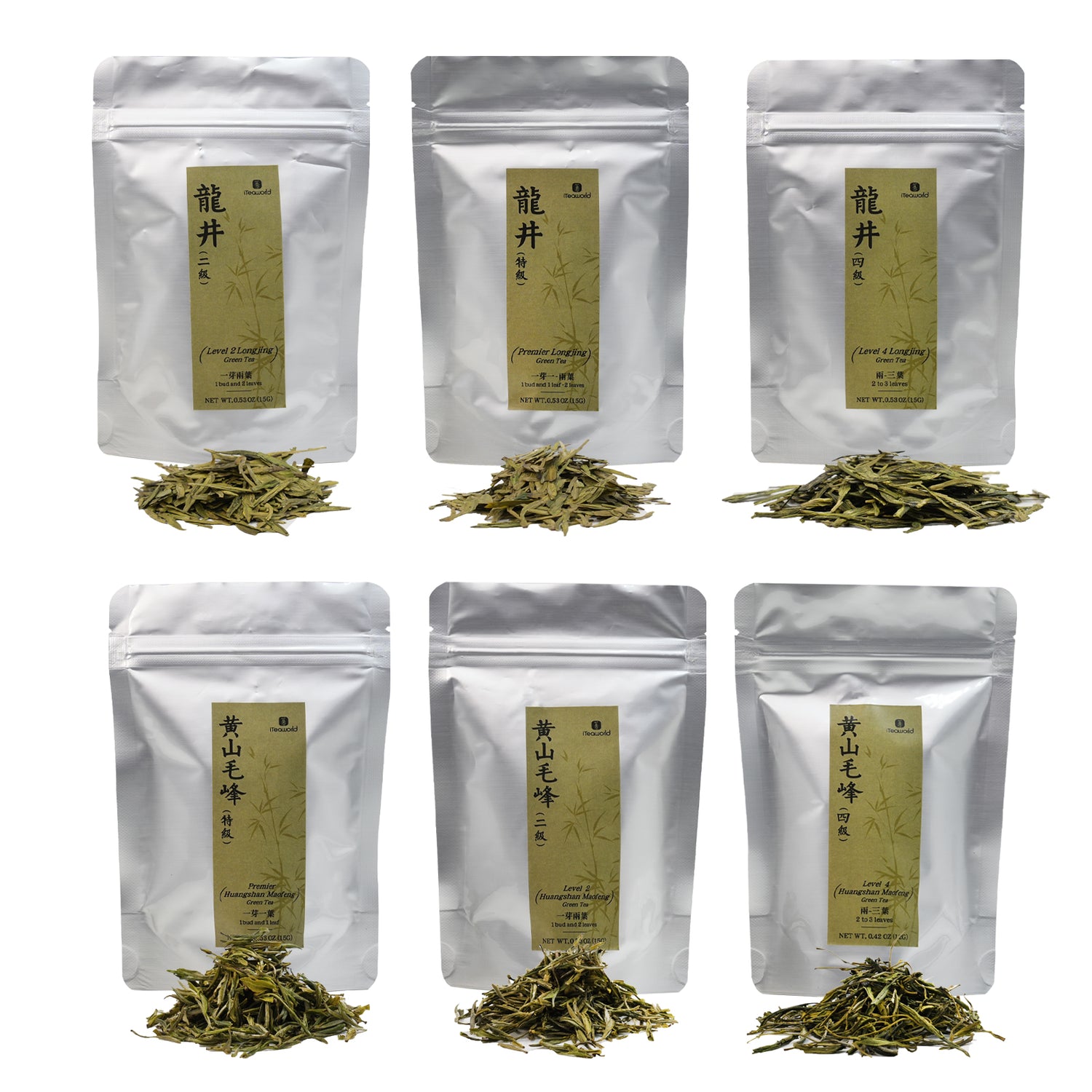
Chinese Green Tea Comparison Set: Longjing & Huangshan Maofeng Grades 90g
Chinese Green Tea Comparison Set: Longjing & Huangshan Maofeng Grades 90g
Introducing our Green Tea Leaf Grade Collection, a specially curated collection designed to help you discover how the picking grade of green tea leaves affects its flavor, aroma, and overall tea-drinking experience. This set includes two renowned Chinese green teas—Dragon Well (Longjing) and Huangshan Maofeng—both made from traditional heirloom varietals. The only difference? The picking grade of the leaves. You’ll be able to taste three distinct grades:
One bud, one leaf
One bud, two leaves
One bud, three leaves
Each tea is handpicked and processed by the same experienced tea master to ensure consistency in craftsmanship. By tasting the subtle variations from these different leaf grades, you'll develop a deeper understanding of green tea and find the perfect grade for your personal preferences.
Reasons for Recommendation:
Learn and explore – This set allows tea lovers to understand the direct impact of leaf grade on the tea’s taste, texture, and aroma.
Personalized tea experience – After trying different grades, consumers can better choose the perfect tea for their own palate.
Curated craftsmanship – The teas are crafted by the same master, so the only difference is the picking grade, ensuring a true comparison experience.
High-quality varietals – Made from traditional heirloom tea trees, these teas offer an authentic Chinese tea experience, highlighting the care and expertise in production.
This set is perfect for anyone curious about the nuances of green tea or those who wish to refine their tea selection skills. Whether you're a tea enthusiast or just getting started, this collection will guide you through the art of green tea grading and tasting.
Biluochun is a renowned green tea in Chinese history, and the top grade of Biluochun requires not only high picking standards and early harvest times but also the craftsmanship of a master. The tea we've chosen is supervised by Shi Liwen, a non-heritage cultural inheritor of Biluochun. Shi Yuewen, born into a family known as the "Tea King," has ancestors who were called "Old Biluo" for their tribute of Biluochun to the imperial court, and his grandmother, Zhou Ruijuan, personally pan-fried tea for Zhu De. Building on the traditional skills of making Biluochun tea, Shi Yuewen has created new methods for making Biluochun black tea and osmanthus-flavored black tea. In 2017, he was selected as a representative inheritor of the fifth batch of national-level intangible cultural heritage projects. The tea he personally makes is not available for purchase; it requires advance booking and is extremely expensive.
2025 Huangshan Maofeng First Flush - Seasonal Rare Tea(Pre-sale)
We’re excited to introduce the 2025 Early Spring First Pluck Huangshan Maofeng, a premium green tea from Master Yu Chengshi's tea garden in Longma Village, Yanzihe Town, Jinzhai County, Lu'an City, Anhui Province. Master Yu has over 30 years of experience in tea making, specializing in Anhui's famous teas like Maofeng and Guapian. His tea garden is located at an elevation of 800 meters, where wild Jinzhai native tea trees grow naturally. These trees thrive in the pure environment, producing tea with natural aromas and a unique flavor profile. This year’s tea was picked around March 20th, during the first pluck of the spring season, using fresh, tender buds and leaves to ensure top-notch freshness and fragrance.
Product details
Craftmaster: Yu Chengshi (30 years expertise)
Tea Varietal: Jinzhai Native Cultivar Group
Origin: Longma Village, Jinzhai, Anhui, China | 800m Elevation
Harvest: First Spring 2025 Plucking (1 bud + 1 leaf standard)
Production Date: Crafted on March 20, 2025
Limited availability: Only 50 units available, 50g per unit
Expected shipping around April 5-10
Why Choose Jinzhai Huangshan Maofeng Instead of Traditional Huangshan Maofeng?
While traditional Huangshan Maofeng is well-known, we’ve chosen Master Yu’s Jinzhai Huangshan Maofeng because it offers the same exceptional quality and unique flavor, but at a more accessible price. Jinzhai is not part of the core Huangshan region, but its natural environment makes it an ideal place for tea cultivation. The wild, native tea trees here have been growing for many years and produce tea with a flavor very similar to Huangshan Maofeng. The purity of the environment gives the tea a quality comparable to that of the famous Huangshan teas, but with a better price-to-quality ratio.
Why Choose Huangshan Maofeng Group Varieties?
We’ve selected Huangshan Maofeng made from group variety tea plants because it captures the most traditional, pure Huangshan Maofeng flavor. Group variety tea trees are grown from seeds, so they have natural genetic diversity. These trees have undergone years of natural selection, making them more stable and adaptable, which allows them to better reflect the natural flavor of the region.
Compared to modern tea plantations with clonal, asexual propagation, group variety tea trees grow in a more natural environment with deeper root systems. This results in richer, more complex tea flavors. The older age of these trees and their long exposure to the natural environment means they carry the most original tea aromas, delivering a tea with more depth and layers.
Da Hong Pao is the most representative tea among Wuyi Rock Teas. Due to its high reputation, many people even refer to all Wuyi Rock Teas as Da Hong Pao. The original mother trees of Da Hong Pao are located at Jiulongke in Wuyi Mountain, and they are now strictly protected from harvesting. To recreate the unique flavor of Da Hong Pao, high-quality Wuyi Rock Teas such as Rou Gui, Shui Xian, along with pure-bred Da Hong Pao, are blended to achieve an outstanding balance of aroma, liquor color, and taste, making it a favorite among tea lovers both in China and abroad.
This Da Hong Pao is blended with mid-mountain (Ban Yan) Wuyi Rock Tea materials in a specific ratio. It has a distinctive mineral sensation (known as Yan Yun, the “rock rhyme”), with a hint of roasted fragrance. The taste is mellow and full-bodied, with every flavor harmoniously integrated. It highlights the classic character of “rock bone and floral fragrance,” offering rich layers—an excellent choice for further exploring the world of Wuyi Rock Tea.
Origin: Jingshui Village, Xingcun Town, Wuyishan City, Fujian Province, China
Altitude: 400–600 m (Ban Yan, mid-mountain)
Soil: Gravel soil
Producer: Chen Hui
Harvest Time: November 2024
Storage Life: 36 months
Brewing Guidelines
Water Temp: 100°C (212°F)
Brewware: Gaiwan, Yixing Clay Teapot
Tea-to-Water Ratio: 5-7g per 100ml
1–3 infusions: 8-15 sec
Later infusions: Add 5–10 sec
Total brews: 10-12 times
Rare Wuyi Rock Tea Cultivars: Hidden Gems from the Core of Zhengyan
While teas like Da Hong Pao, Rou Gui, and Shui Xian have become well-known representatives of Wuyi Rock Tea, the rare cultivars—such as Tie Luo Han, Bai Ji Guan, Shui Jin Gui, and Ban Tian Yao—tell a deeper, more authentic story. These teas originate from wild, heirloom tea trees that have grown for centuries in the heart of the Wuyi Mountains, shaped by natural selection and careful cultivation. They embody the original genetic heritage of Wuyi rock tea.
Grown on remote cliffs and craggy ledges in the Zhengyan core production zone—places like Guidong Cave and Sanhua Peak—these tea trees sink their roots deep into rocky crevices, drawing in rare minerals. The result is a flavor profile marked by the elusive and unmistakable "Yan Yun" (rock rhyme) that connoisseurs revere.
Who would enjoy this tea?
This collection is perfect for those who have explored the classic Wuyi rock teas and are ready to dive deeper into its rare and distinctive varieties. It includes historically renowned teas like Tie Luohan, Bàn Tiān Yāo, Bai Ji Guan, Shui Jin Gui, and Bai Rui Xiang, along with newer, highly sought-after cultivars like Rui Xiang and Jin Mudan. A journey through the diverse flavors and craftsmanship of Wuyi rock tea.
To explore how aging changes the flavor of tea, we selected five traditionally charcoal-roasted Minnan Shuixian teas from Yongchun Beikeng Overseas Chinese Tea Factory—vintages from 1994, 2004, 2014, 2020, and 2024.
This tasting journey reveals how time transforms the rich character of Shuixian oolong. Let’s experience the evolution together.
This Set Includes:
2024 Minnan Shui Xian (Charcoal-Roasted, Rich Aroma Style)* 20 g
2019 Minnan Shui Xian (Charcoal-Roasted, Rich Aroma Style)* 20 g
2014 Minnan Shui Xian (Charcoal-Roasted, Rich Aroma Style)* 20 g
2004 Minnan Shui Xian (Charcoal-Roasted, Rich Aroma Style)* 20 g
1994 Minnan Shui Xian (Charcoal-Roasted, Rich Aroma Style)* 20 g
Flavor Evolution (For Reference)
2024 (New Tea):
Dominated by natural orchid aroma with a touch of charcoal roast. The fragrance is bright and long-lasting — when brewed with boiling water, the rising steam carries a rich floral note. The tea leaves a clear, lingering aroma in the cup. The taste is full-bodied, smooth, and sweet, with richness but no bitterness. It delivers a strong returning sweetness and a long, lingering finish. The liquor is robust yet not overly stimulating.
5-Year Aged (2020):
Orchid aroma fades, charcoal notes retreat. Hints of ripe fruit begin to emerge, along with a touch of fresh woodiness. A light acidity appears, but the tea still stimulates salivation. The overall taste becomes smoother, though slightly thinner in complexity.
10-Year Aged (2015):
Acidity lessens. Aged notes (like dry wood) blend with faint traces of orchid. The freshness is gone. The liquor becomes silky, and the returning sweetness shifts toward a rock sugar-like softness.
20-Year Aged (2005):
Dominated by aged aromas (sandalwood, herbs). The liquor turns amber, thick and rich like rice soup. The aftertaste is deep with a medicinal undertone.
30-Year Aged (1995):
A complex blend of aged and herbal notes (like ginseng and dried citrus peel). The liquor is thick, smooth, and almost oily. Sweetness is subtle and refined, with a long-lasting aftertaste reminiscent of aged liquor.
How to Brew?
Teaware:
For fresh tea, use a gaiwan or Yixing teapot.
For teas aged 5–10 years, use a Yixing teapot.
For teas aged 20+ years, use an old Yixing teapot or a coarse clay pot for boiling.
Water Temperature:
Fresh tea: 95–100°C
Aged tea: 100°C
Tea-to-Water Ratio:
1g tea per 20 ml of water
Awakening the Tea:
For teas aged 5–10 years: open the bag and let the tea breathe for about 5 minutes before brewing.
For teas aged 20+ years: open the bag and let it air out a day in advance.
Steep Time
Rinse First:
First infusion: quick 3-second rinse, discard — this is to warm up and awaken the tea.
2nd to 4th infusion: 8–15 seconds
From the 5th infusion onward: increase time by 5–10 seconds per brew
For Aged Tea (20+ years):
Can be boiled directly or brewed in a teapot for 10 infusions before boiling.
Why Choose This White Peony Tea?
If you love delicate floral aromas, smooth textures, and the unique charm of traditional Chinese white tea, this White Peony (Bai Mudan) from Fuding, China, is a perfect fit. Its light sweetness and refreshing aftertaste make it ideal for beginners and seasoned tea lovers alike. Expertly crafted by Master Li Shengyuan using traditional sun-drying techniques, this tea is perfect for sipping, gifting, or collecting.
Product Details:
Origin: Fuding, Fujian, China
Harvest Date: April 2024
Grade: Premium White Peony (Bai Mudan)
Tea Variety: Fuding Da Bai (Big White)
Craftsmanship: Masterfully crafted by Li Shengyuan, a senior tea artisan with over 10 years of experience
Flavor Profile: Delicate floral aroma, smooth texture, and a refreshing, slightly sweet finish
What Makes It Special: A traditional sun-dried white tea from China’s famous white tea region, handpicked and expertly crafted for quality and collectibility
How to brew:
Water Temp: 194–203°F (or 90-95℃)
Tea-to-Water: 1g per 25ml
Steep Time: 30 sec first steep, add 5 sec each time
Teaware: White porcelain gaiwan
Re-Steep: 5-7 times
About White Peony Tea:
White Peony, or Bai Mudan, is a premium Chinese white tea known for its elegant floral fragrance, light sweetness, and clean, refreshing taste. Made from tender tea buds and the first leaf, it strikes a perfect balance between flavor and smoothness, making it approachable for beginners and cherished by tea enthusiasts. Its name comes from its unique appearance: green leaves and silvery-white buds resemble blooming flowers. When steeped, the leaves cradle the buds, creating a visual like a flower in bloom. While it can be aged, its tender nature makes it best enjoyed fresh.
Storage Tips:
To preserve its quality, store White Peony tea in a cool, dry place following GB/T 30375 standards.
For short-term storage: Use kraft paper or aluminum bags, remove excess air, seal tightly, and place in a tin or small box.
For long-term storage: Use triple-layer packaging (cardboard box, aluminum bag, and plastic bag) in a controlled environment below 77°F (25°C) with humidity under 50%.
Many white teas sold online in the U.S. are either of lower grades or come from Yunnan, making it tough to find authentic Fuding white tea at a reasonable price. Our Gongmei white tea from the renowned Fuding region in Fujian offers just that - an authentic taste rooted in traditional sun-drying and slow withering crafts, meticulously made from the local "cai cha" variety. This tea is made from whole loose leaves compressed into small 5g cakes. There’s no need to measure—perfect for quick and convenient brewing.
If you're looking for a genuine origin, traditional tea craft, and a balanced flavor profile – neither too light nor too strong – this tea provides excellent value for money. Its smooth and easy-drinking character makes it a perfect choice for beginners.
Why choose our Gongmei White Tea?
Genuine Origin: Our tea comes from the prestigious Fuding region in Fujian, ensuring authenticity and adherence to Fuding's high standards.
Traditional Variety: We use the local "cai cha" variety, known for its strong adaptability and imparting a rich flavor profile to the tea.
Classic Craft: Our Gongmei white tea undergoes traditional sun-drying and slow withering processes, essential for developing the tea's fresh and pure taste.
Suitable for Long-Term Storage: The quality of this tea allows for long-term storage, with its flavor becoming more elegant over time, potentially increasing in value as it ages.
High-Value Choice: For those seeking the authentic flavor of Fuding white tea without the high price tag, our Gongmei offers a high-value choice without compromising quality.
Perfect Balance: If you're looking for a white tea that's neither too light nor too strong, our Gongmei achieves a perfect balance, providing a smooth and easy-drinking experience at a reasonable price.
Ideal for Beginners: Our carefully curated Gongmei white tea offers a gentle introduction for white tea novices, avoiding the pitfalls of being too bland or too strong for new tea drinkers.
Experience the gentle charm of our authentic Gongmei white tea, with its selected quality and value, making it an ideal choice for everyday drinkers and those new to the world of white tea.
These bag are specially designed to protect your teaware. Each bag is lined with soft padding that provides full cushioning and protection for teapots and cups, preventing damage from accidental bumps during handling or storage.
These teaware bags are perfect for both home storage and travel, offering reliable protection for your favorite teaware wherever you go.
Sizes:
Persimmon Cup Bag – Orange: 6 cm (L) × 5.5 cm (W) × 8 cm (H)
Da Hong Pao is the most iconic and renowned tea among Wuyi Rock Teas. This top Da Hong Pao is blended with 30% zhengyan Wuyi Rock Tea and 70% banyan Wuyi Rock Tea, roasted using traditional Wuyi charcoal methods. The liquor is golden and clear, with an exceptionally rich and pure aroma free of any off-notes.
On the palate, it is mellow and smooth, with a texture reminiscent of rice soup—delicate yet full-bodied. The fragrance is perfectly integrated into the liquor, achieving an ideal balance of flavor and aroma without any roasted taste. It offers a calm, refined, and extremely pleasant drinking experience. Even after multiple infusions, the aroma remains strong and long-lasting.
Origin: Jingshui Village, Xingcun Town, Wuyishan City, Fujian Province, China
Type: Zhengyan & Banyan Blend (Half-Rock, Half-Subrock)
Soil: Gravel Soil
Producer: Chen Hui
Harvest: November 2024
Aging: 36 months
Brewing Guide:
-
Water Temperature: 100°C (212°F)
-
Brewing Vessel: Gaiwan or Yixing Clay Teapot
-
Tea-to-Water Ratio: 5–7g per 100ml
-
Infusions:
1–3 infusions: 8–15 sec
Later infusions: +5–10 sec per infusion
The 2024 Silver Needle White Tea is a must-have for white tea enthusiasts and collectors. Crafted in Fuding, the birthplace of white tea, this premium tea is made from tender Fuding Da Bai buds using traditional sun-drying methods. Its delicate floral aroma, honey-like sweetness, and refreshing smoothness make it perfect for those seeking a refined and natural tea experience. Ideal for immediate enjoyment or aging, it’s a great choice for wellness-focused tea drinkers and collectors. However, if you prefer bold teas or add milk and sugar, this delicate tea may not suit your taste.
Silver Needle White Tea Product Details
Origin: Fuding City, Fujian Province, China
Harvest Date: March 23, 2024
Grade: Premium Silver Needle (First Grade)
Tea Variety: Fuding Da Bai (Big White Tea Bush)
Tea Master: Li Shengyuan, Senior Tea Artisan with over 10 years of experience
Flavor Notes: Delicate floral aroma, honey-like sweetness, and refreshing smoothness
What Makes It Special: Crafted in Fuding, the birthplace of white tea, using traditional sun-drying methods. This tea is made exclusively from tender tea buds, making it perfect for tea lovers and collectors alike.
What Is Silver Needle White Tea?
Silver Needle is the highest grade of Chinese white tea. Officially, it’s defined as a white tea made from the single buds of Fuding Da Bai or Shui Xian tea bushes through specific steps like withering, drying, and sorting. Harvested every spring, the picking season typically starts in mid to late March and ends around early April.
What sets Silver Needle apart is its exceptional freshness and smooth flavor, thanks to its high levels of amino acids, which give it its signature refreshing taste.
Perfect for enjoying now or aging for years to come!
How to brew
Water Temp: 194–203°F (or 90-95℃)
Tea-to-Water: 1g per 25ml
Steep Time: 30 sec first steep, add 5 sec each time
Teaware: White porcelain gaiwan
Re-Steep: 5-7 times
Pour Tip: Pour along the gaiwan’s side, not directly on leaves
How to Store Silver Needle White Tea
While white tea can be aged and stored for long periods, Silver Needle is best enjoyed fresh, similar to green tea, to appreciate its delicate and vibrant flavor.
Short-Term Storage: For small amounts, use kraft paper bags or aluminum pouches. Squeeze out excess air, seal tightly, and place the bags in a small cardboard box or tin can for safekeeping.
Long-Term Storage: If you’re storing a larger quantity, use a triple-layer method:
Wrap the tea in an aluminum pouch.
Seal the pouch in a plastic bag.
Place everything inside a sturdy cardboard box.
Keep the tea in a cool, dry place where the temperature stays below 77°F (25°C) and the humidity is under 50%.
Following these tips will help preserve its quality for years to come!
Introduction:
This Rose Black Tea is meticulously selected from the spring harvest of 2024. Combining Yunnan black tea from Fengqing, Yunnan, at elevations of approximately 1600 meters, with locally sourced red roses from Yunnan, the exceptional growing conditions impart a unique and richly layered flavor to this tea. The plucking standard of one bud and two leaves, paired with fresh red roses and three scenting processes, ensures a delicate rose fragrance perfectly blended with the robust, mellow taste of black tea.
Reasons to Recommend:
- Core Production Area: Grown in Fengshan Town, Fengqing County, Yunnan, where the average annual temperature ranges from 18°C to 22°C, with significant daily temperature variations and annual precipitation of 1200-1700 mm. The region is characterized by its climate, where "morning and evening mists blanket the land on clear days, and clouds shroud the mountains on rainy days."
- Scenting Process: Yunnan black tea serves as the base, while locally sourced red roses from Yunnan are used for scenting. The traditional scenting process is repeated three times, resulting in a tea where the floral aroma and tea fragrance are perfectly balanced.
- High-Mountain Tea Gardens: Since ancient times, high mountains shrouded in mist have produced premium teas. This tea thrives in such environments, where lush vegetation and organic-rich soil, combined with extreme daily temperature fluctuations, enhance the accumulation of flavorful compounds in the leaves.
Oxidation Level: High
Roasting Level: None
Tea Garden Soil: Red soil
Processing Time: August 2024
Best Before Date: 24 months
Tea Variety: Yunnan Tea No. 10
Introduction:
This Hubei Dark Tea is meticulously selected from the autumn harvest of 2022. Plucked from high-altitude tea gardens in Zhaoliqiao Town, Hubei Province, it adheres to the plucking standard of one bud and three leaves. This tea is a type of Hubei Dark Tea known as "Mi Zhuan Cha" (Rice Brick Tea), renowned for its unique flavor profile. The tea liquor is rich and robust, with a slight initial bitterness that transforms into a lasting sweet aftertaste. It primarily exudes a floral and honey-like aroma, accompanied by a subtle aged fragrance.
Reasons to Recommend:
- Unique Raw Material: Mi Zhuan Cha is a specialty tea produced in Chibi City, Hubei Province, known as the "Hometown of Chinese Brick Tea." It is a compressed black tea made entirely from tea dust, which gives it the name "Rice Brick Tea."
- Distinct Appearance: The finished Mi Zhuan Cha is visually striking, with sharp edges, a smooth surface adorned with intricate patterns, and a glossy black brick color. When brewed, it produces a deep red liquor with a pure aroma and a rich, mellow taste.
- High-Mountain Tea Gardens: The tea trees grow at high altitudes, where significant daily temperature variations slow their growth. The abundant mist and moisture nourish the tea trees, enriching the leaves with nutrients and resulting in a tea with a robust flavor and strong aroma.
Oxidation Level: Wet piling followed by high-temperature steam pressing
Roasting Level: None
Tea Garden Soil: Yellow-brown soil
Processing Time: Autumn 2022
Best Before Date: Suitable for long-term storage
Tea Variety: South Hubei Group Variety
Recently viewed products
Chat with fellow tea lovers, ask questions, and share your tea moments.





